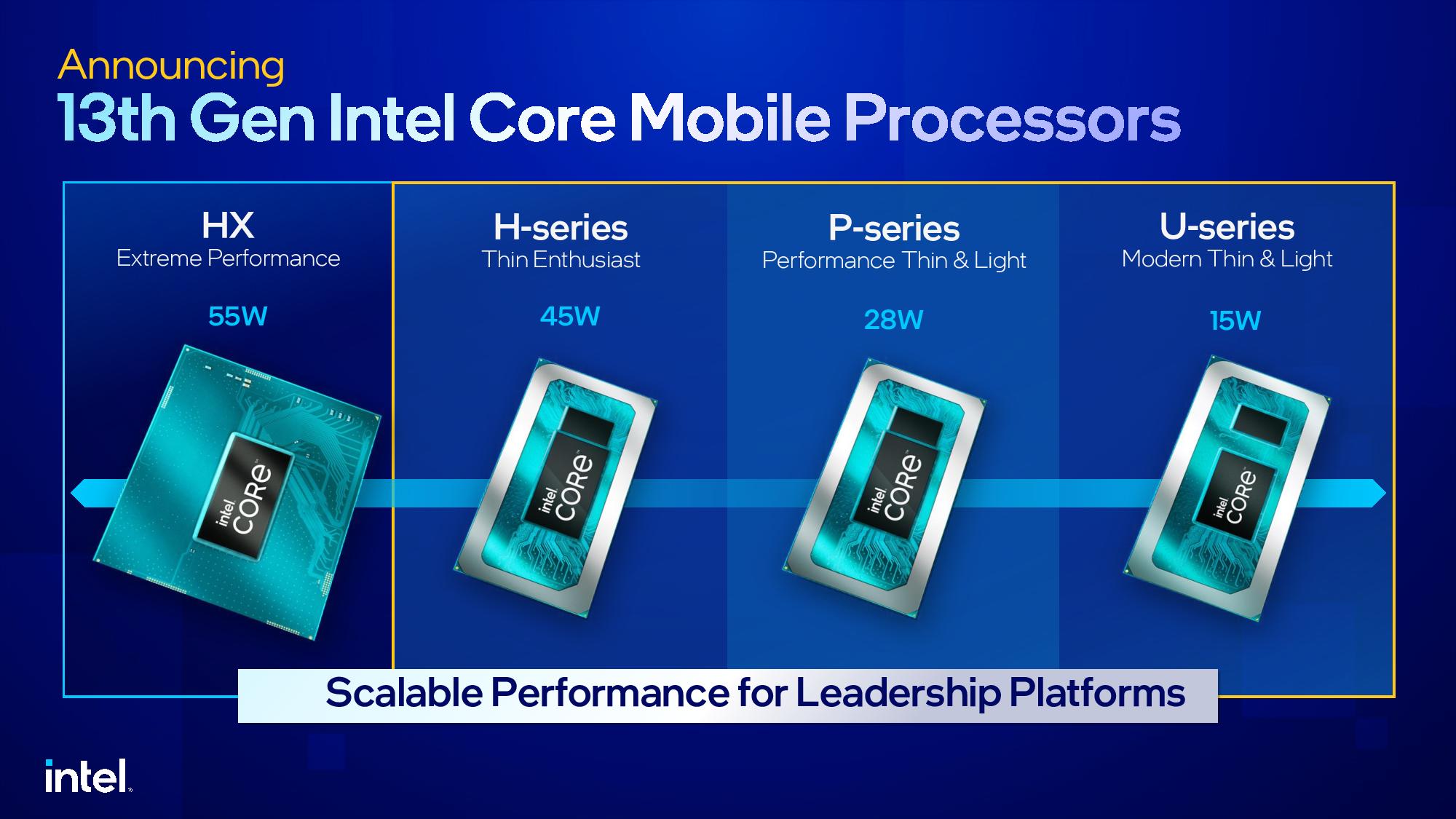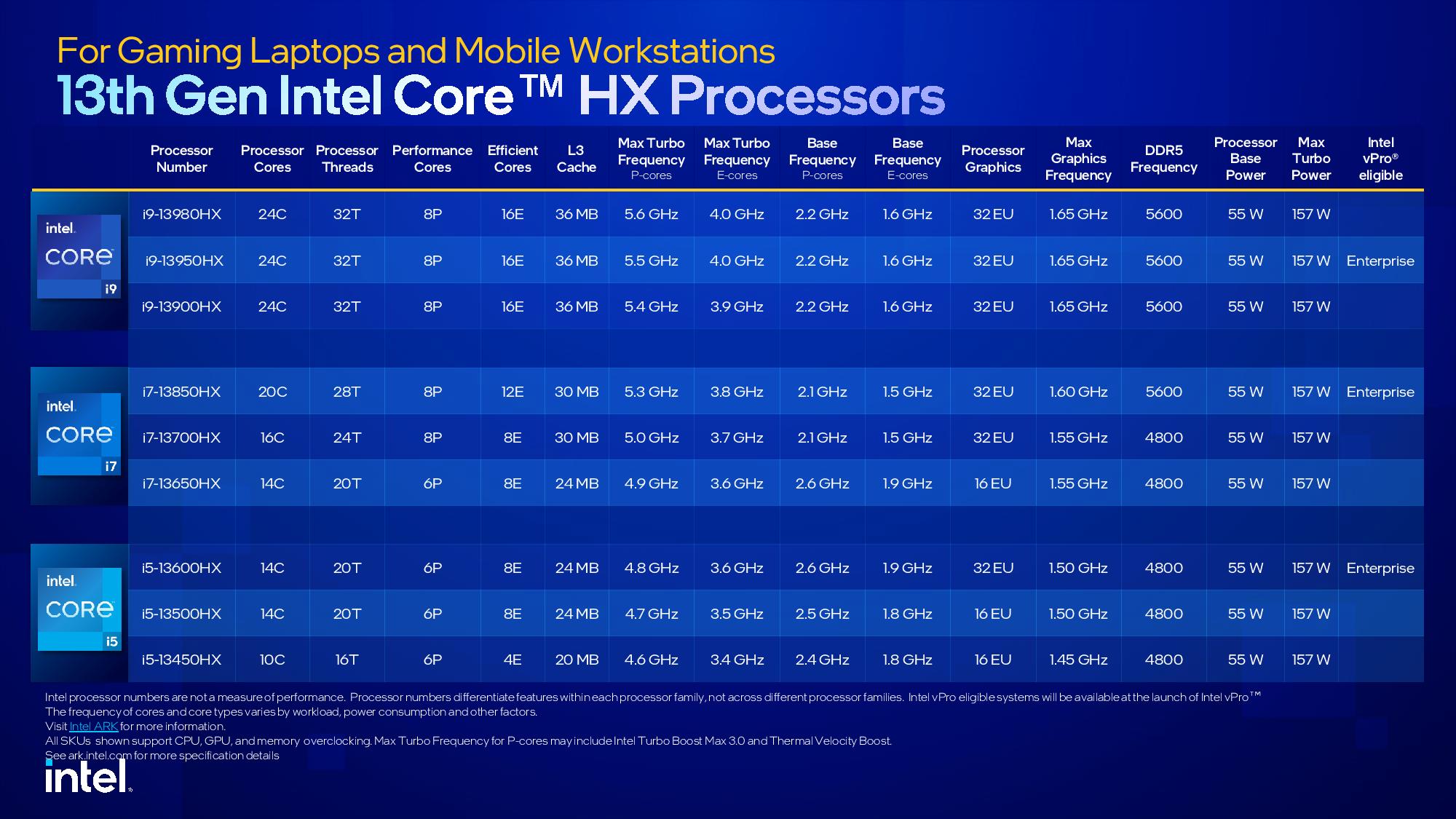Intel Launches 13th-Gen Mobile With 5.6 GHz 24-Core i9-13980HX, HX, H, P, and U Series
Battery Life Be Damned.
Intel announced 32 new processors that comprise its 13th-Gen Mobile lineup today, including a significant expansion of its HX-series that now offers an industry-first 24 cores crammed into the laptop form factor. Like the other HX-series models, the flagship Core i9-13980HX leverages the same silicon as the Raptor Lake desktop PC chips, but Intel jammed it into a slimmer 55W package to power the highest-end gaming and workstation laptops. The HX series now tops out at 24 cores, 32 threads, an industry-leading 5.6 GHz turbo frequency, and a 157-watt peak power draw that the company claims delivers up to 11% faster single-threaded performance and 49% faster productivity performance over the previous-gen H-series.
Naturally, that sort of prodigious horsepower means you won’t stray far from an outlet with the halo HX-series model, but Intel has unashamedly designed the HX processors for peak performance on wall power as it looks to fend off challengers like AMD’s soon-to-be-released Ryzen 7000 Dragon Range processors and the new Apple Silicon-powered Macs. Despite the specs, Intel and its partners have managed to pack the HX series chips into comparatively thin chassis that range from 19mm to 22mm, and the company expects its partners to launch 60 HX-powered laptops this year.
Intel also announced a wide range of H, P, and U series processors to address the 45W, 28W, and 15W segments, respectively. These lower-end 13th-Gen processors carry all the architectural hallmarks of their Alder Lake predecessors, meaning these appear to be a refresh generation of processors but have higher peak frequencies to provide more performance in gaming and productivity applications.
Intel also introduced its new low-end N-series of processors, curiously branded as “Intel Processor.' Let's dive in.
Intel 13th-Gen Raptor Lake HX Processor Specifications
Intel’s HX series debuted last year as the halo product family for the highest-end workstations, but the 13th-Gen Raptor Lake generation finds the company working with partners to broaden the scope to include thinner devices and budget-geared models. Intel expects up to field five times the number of HX-equipped systems with this generation (60), and those products will roll out over the course of Q1.
Like the desktop PC chips, the Raptor Lake mobile chips come fabbed on the Intel 7 process. They feature the hybrid architecture that blends a mix of big and fast Performance cores (P-cores) with clusters of small and powerful Efficiency cores (E-cores) that chew through background processes. You can read more about the design here.
The HX-series Core i9 models have 8 more E-cores than their predecessors, but all other core counts remain similar compared to the previous-gen models. The Core i9 models come with up to 24 cores (eight P-Cores and 16 E-Cores) and 32 threads, Core i7 stretches to 20 cores (8P+12E) and 28 threads, while the Core i5 models top out at 14 cores (6P+8E) and 20 threads.
All the HX-series models have a 55W Processor Base Power (PBP) rating and a battery-draining 157W Max Turbo Power (MTP) rating, but Intel says some systems will deliver even higher peak power values. Naturally, that means these systems will be best on AC power.
Get Tom's Hardware's best news and in-depth reviews, straight to your inbox.
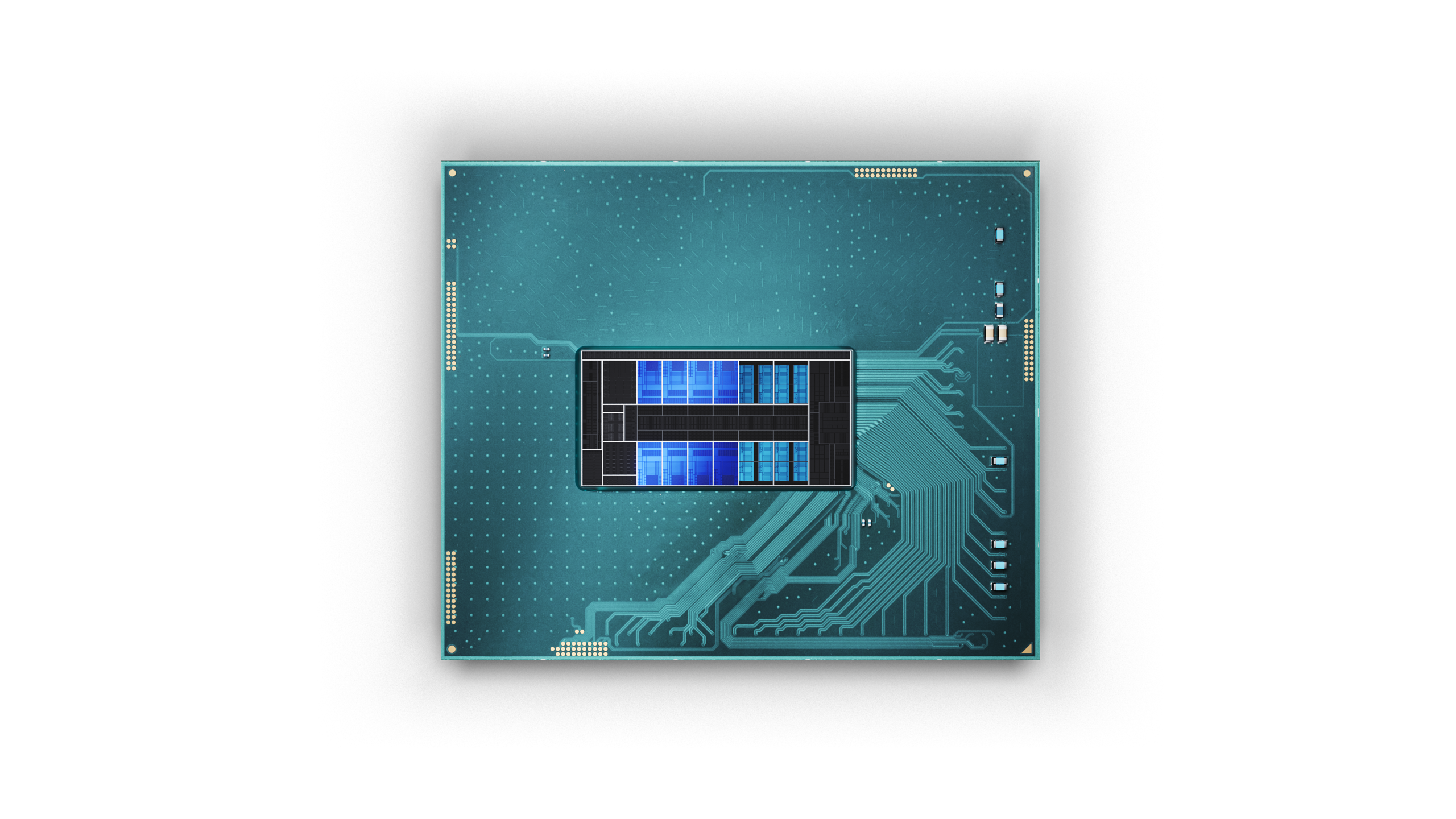
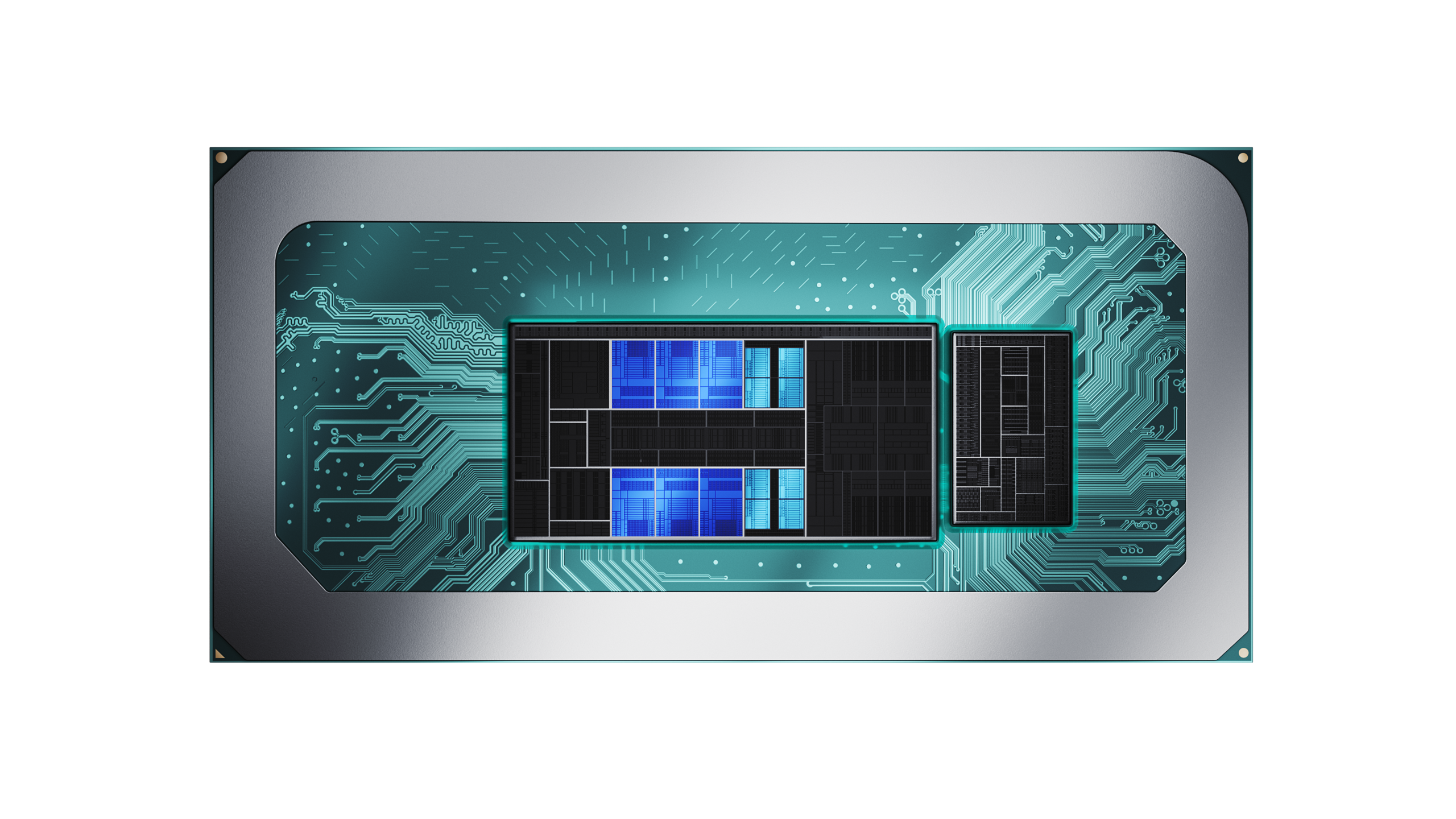
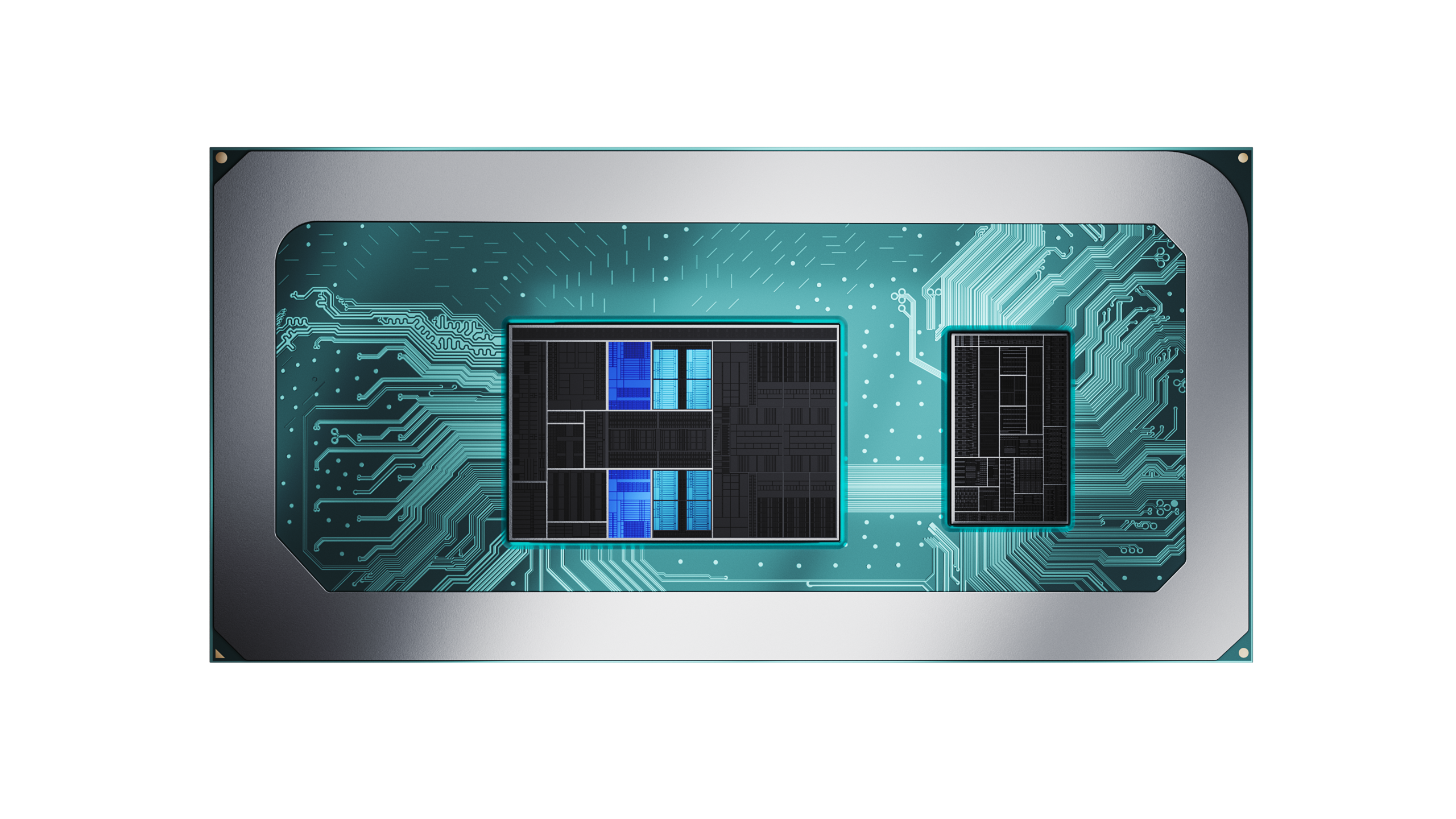
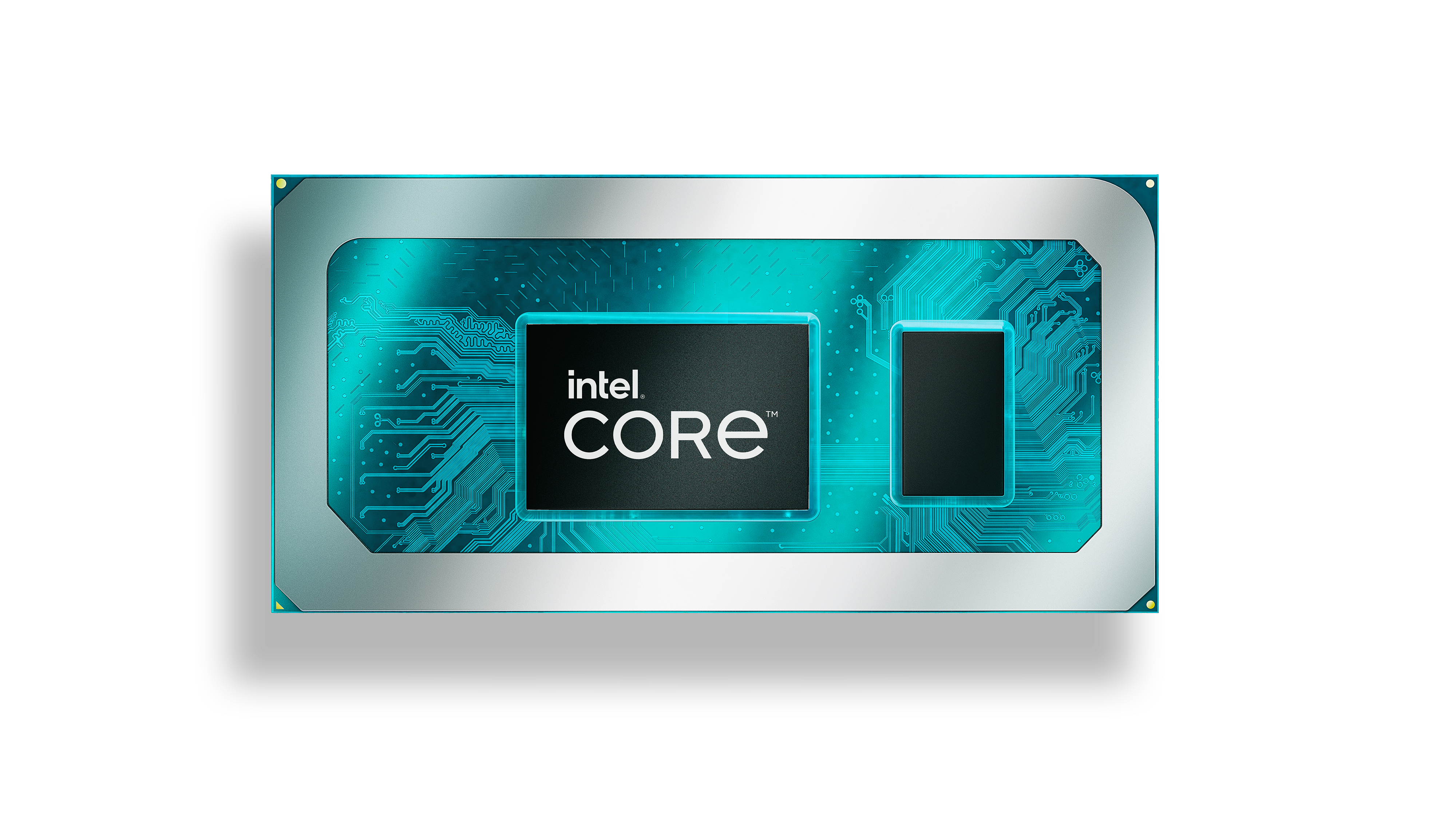
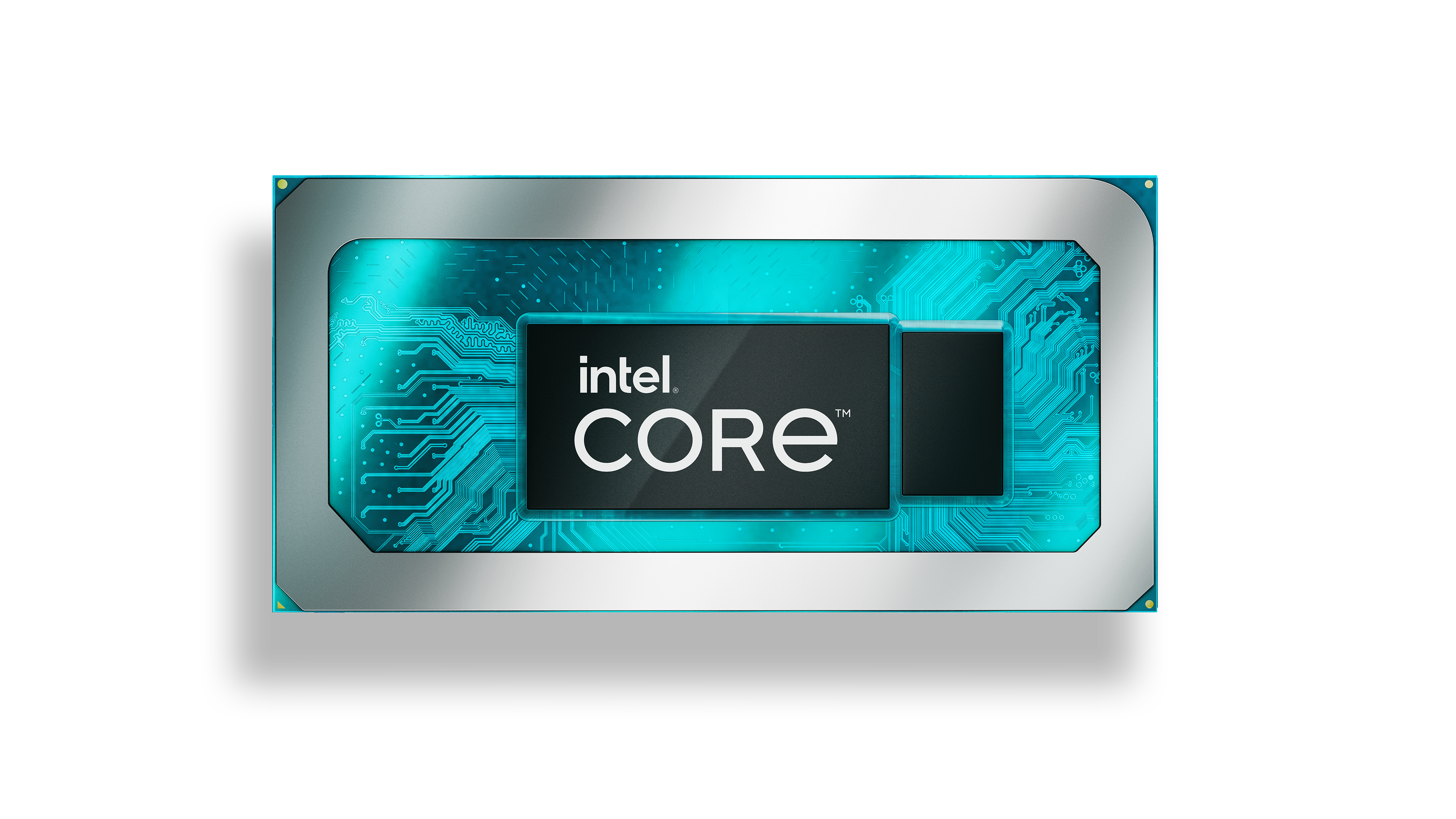
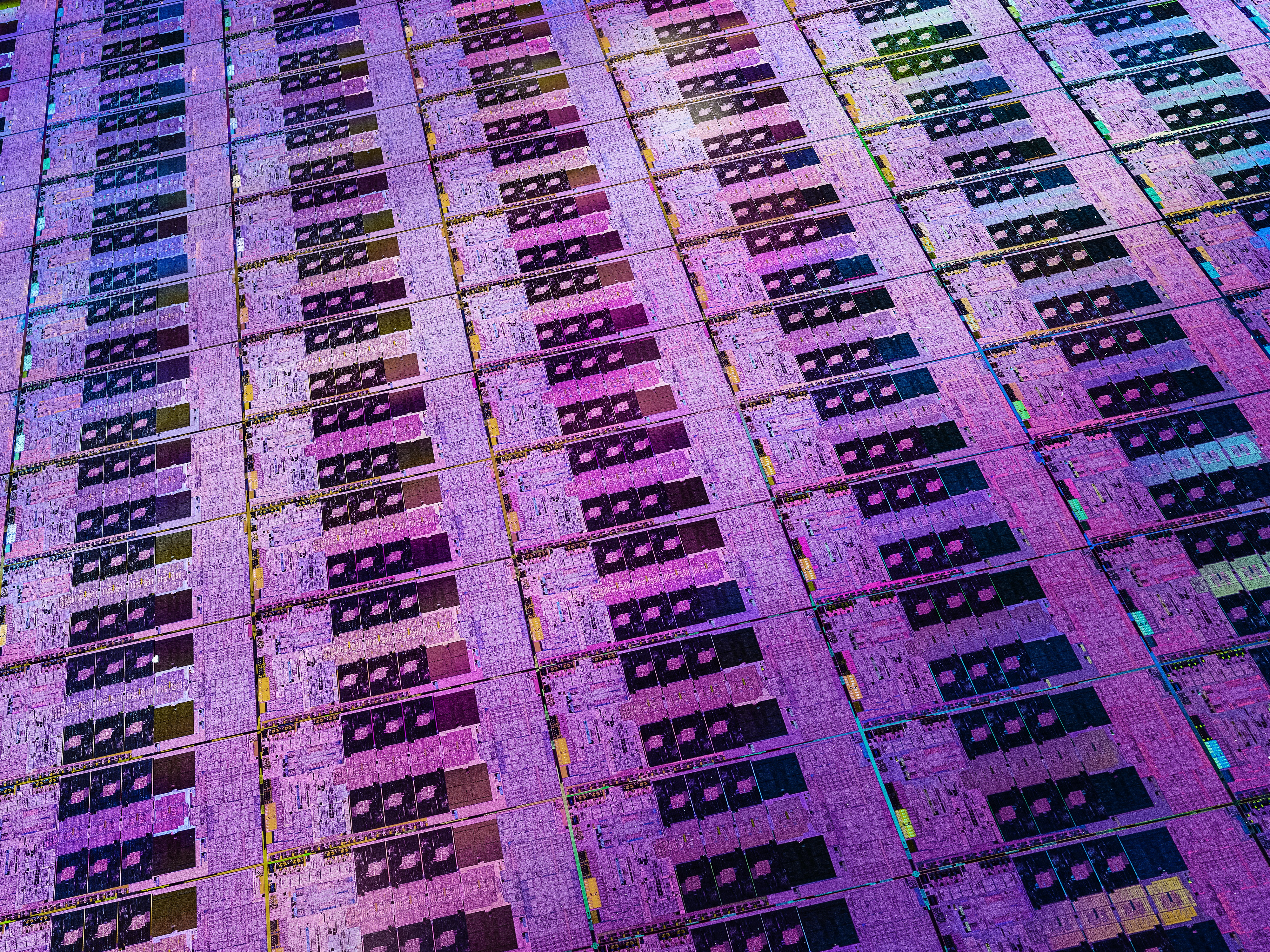
The systems come with full overclocking support for both the cores and memory (some systems will offer XMP RAM kits), along with support for up to 128GB of either DDR4-3200 or DDR5-5600 memory (up to ECC included). The chips also support 16 PCIe 5.0 lanes for graphics and four PCIe 4.0 lanes for storage. Support for WiFi 6E returns, along with new support for Bluetooth LE (Low Energy) audio.
The HX processors use the same silicon as Intel's desktop PC chips, so they have the Xe LP graphics engine with up to 32 EUs. In comparison, the rest of the 13th-Gen mobile lineup comes with the faster Iris Xe engine with up to 96 EUs. All the HX-powered laptops will have discrete GPUs, so the lesser integrated GPU isn’t a concern.
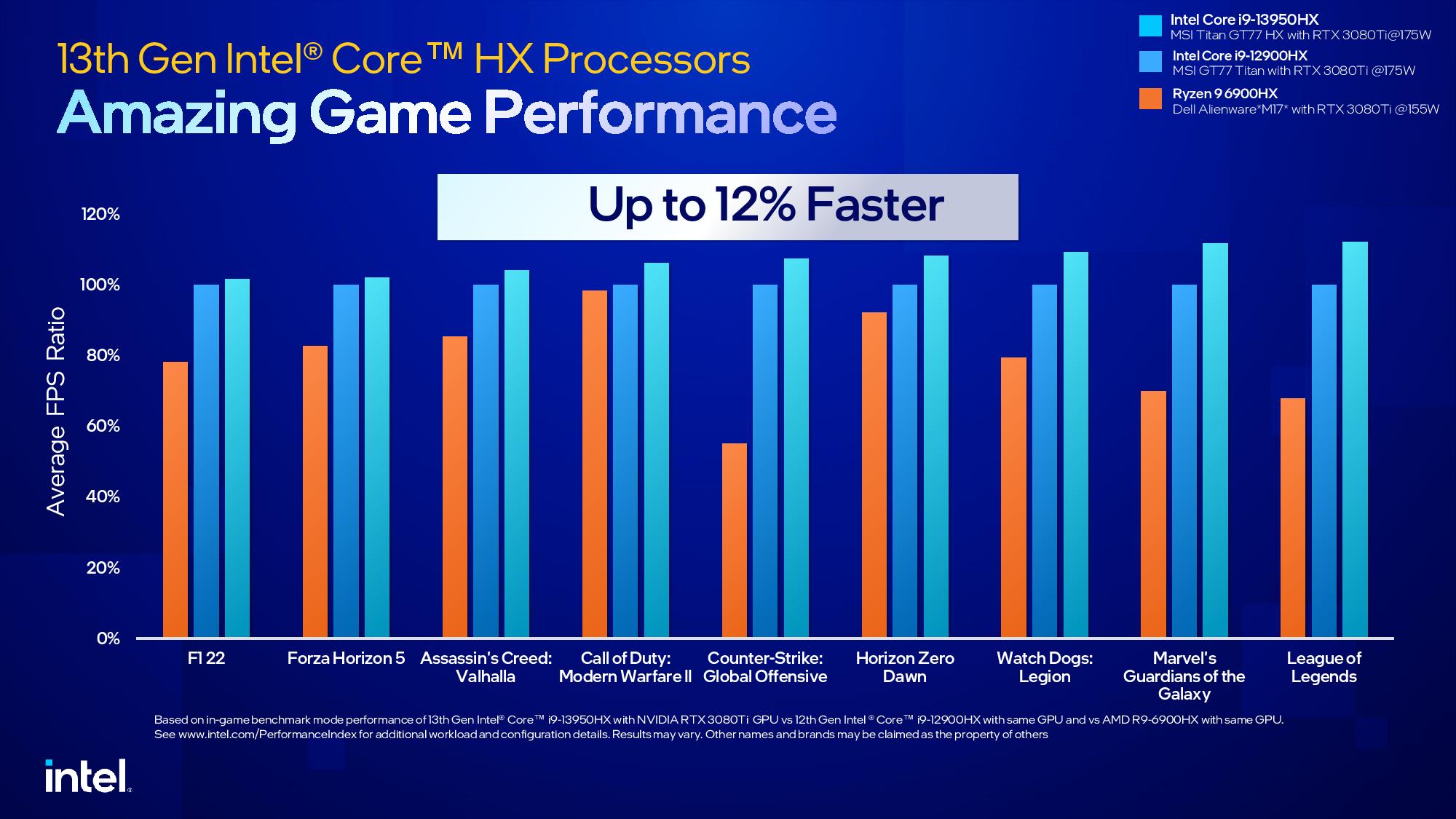
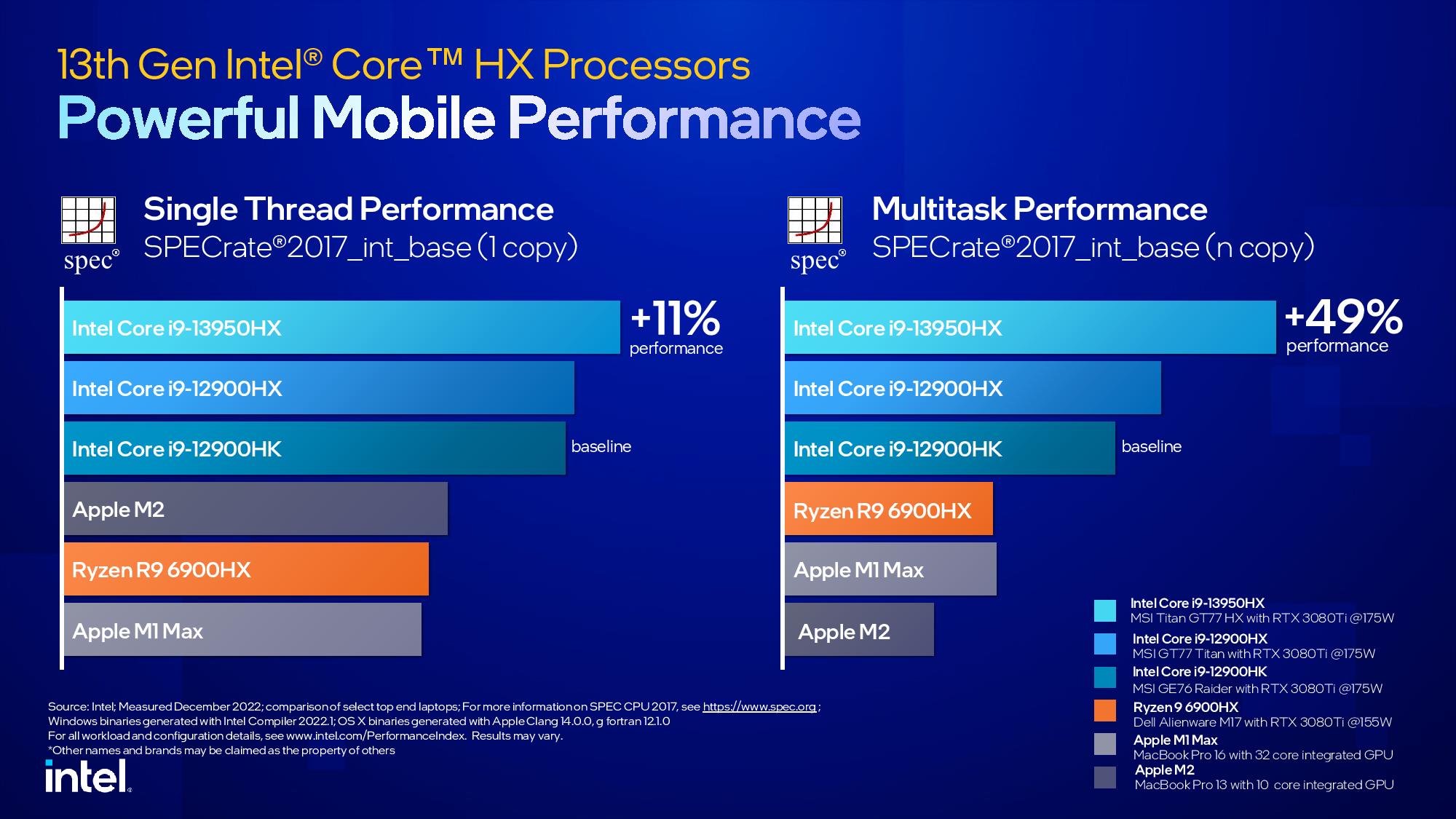
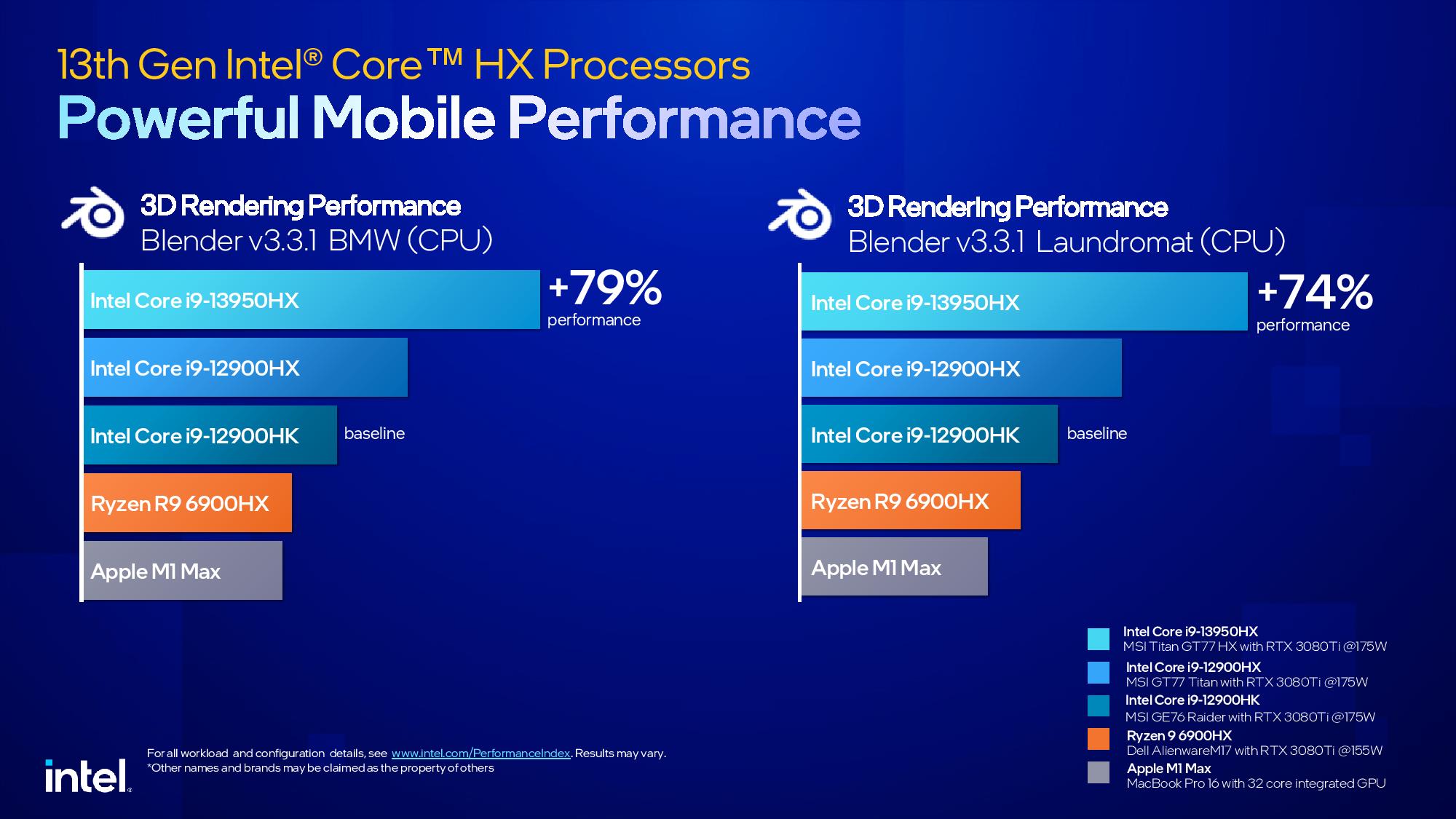
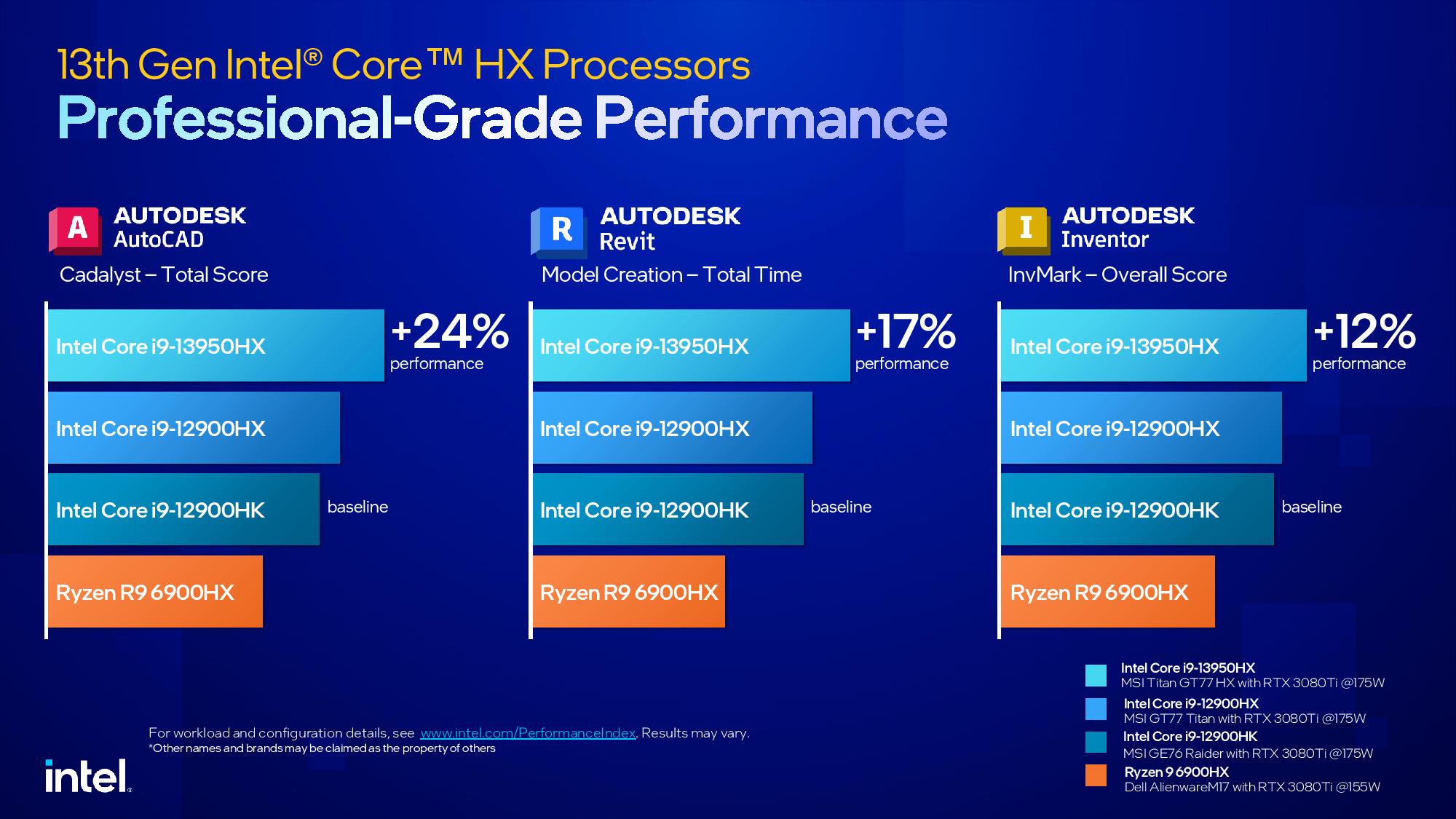
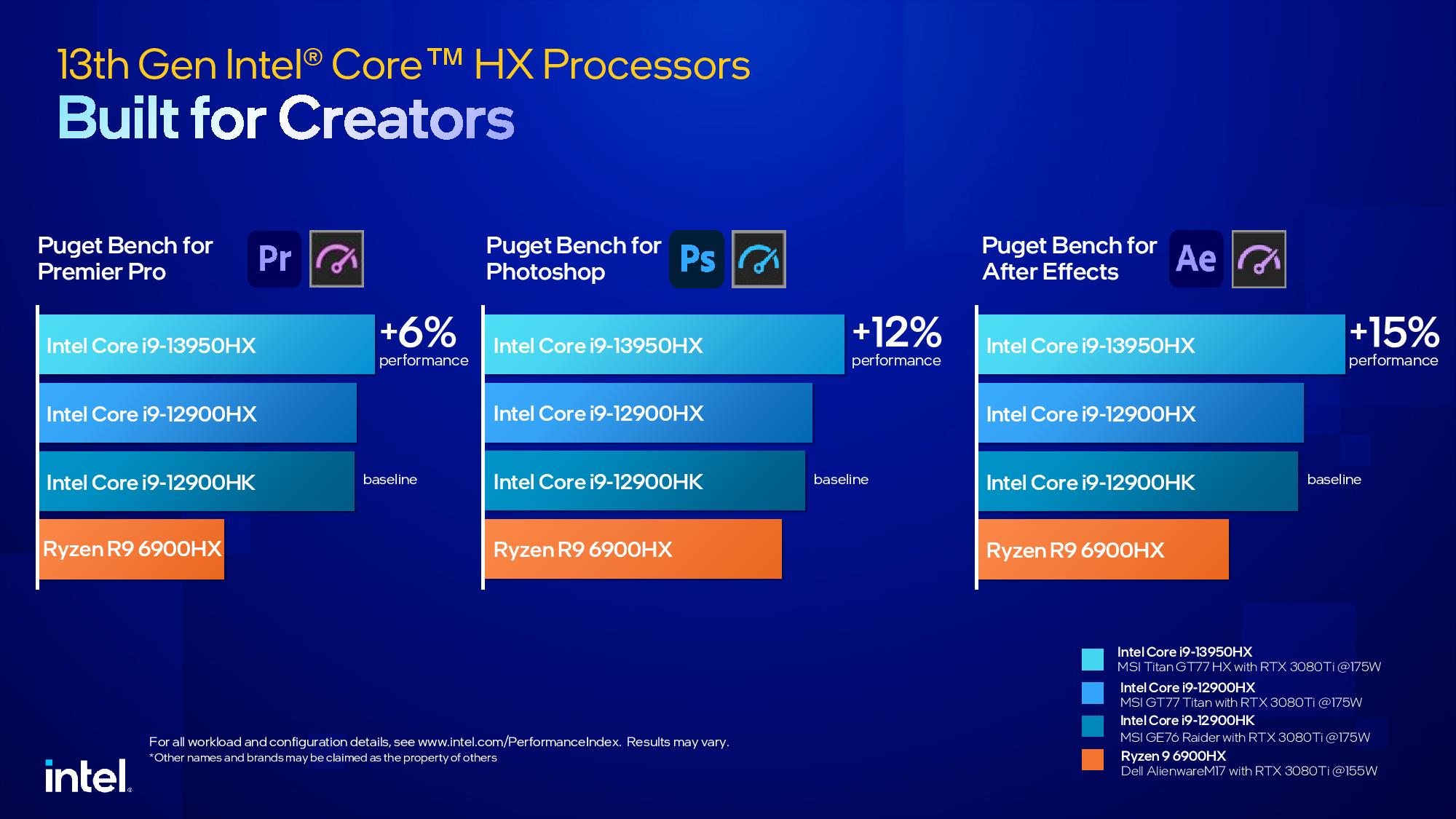
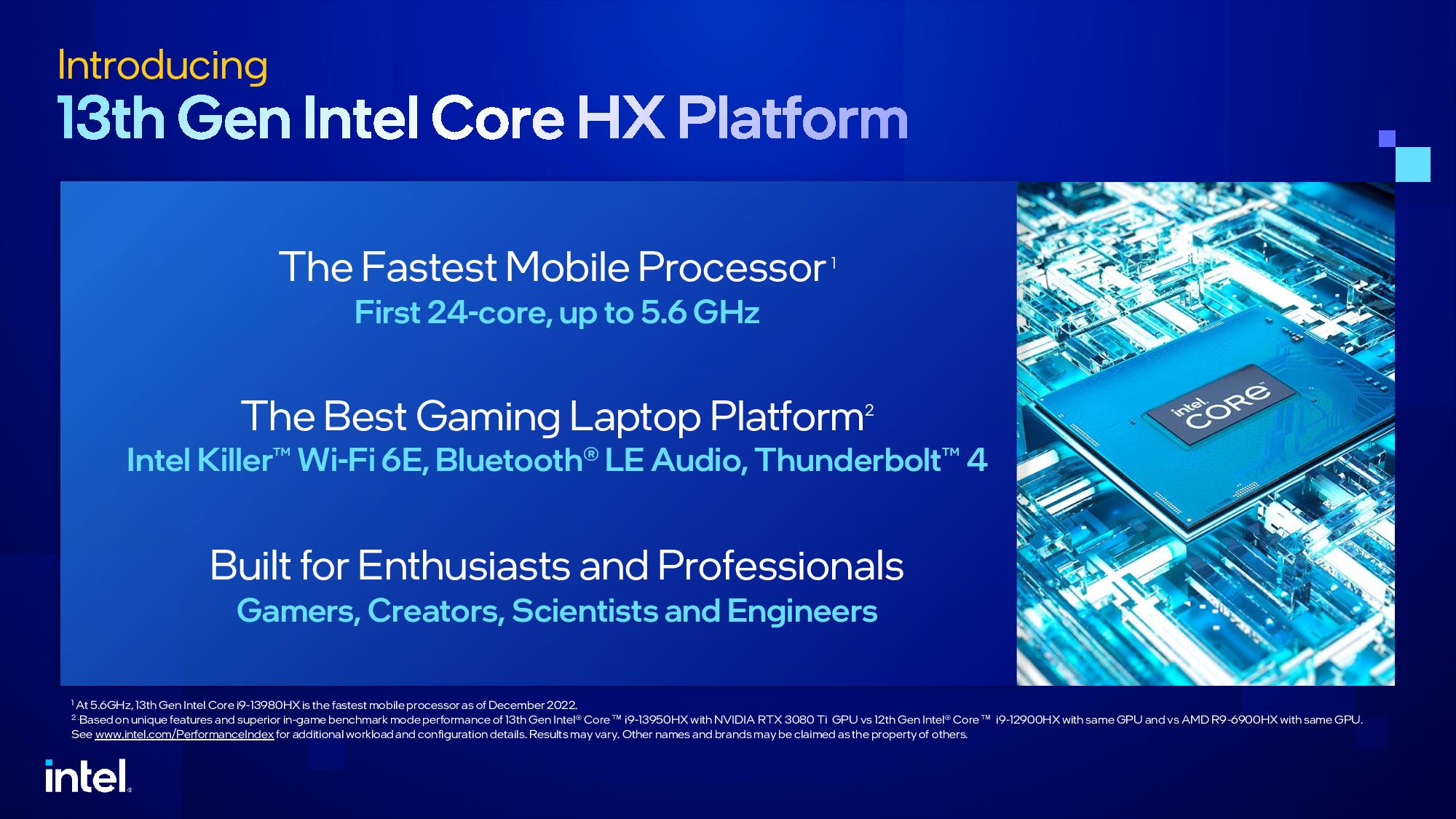
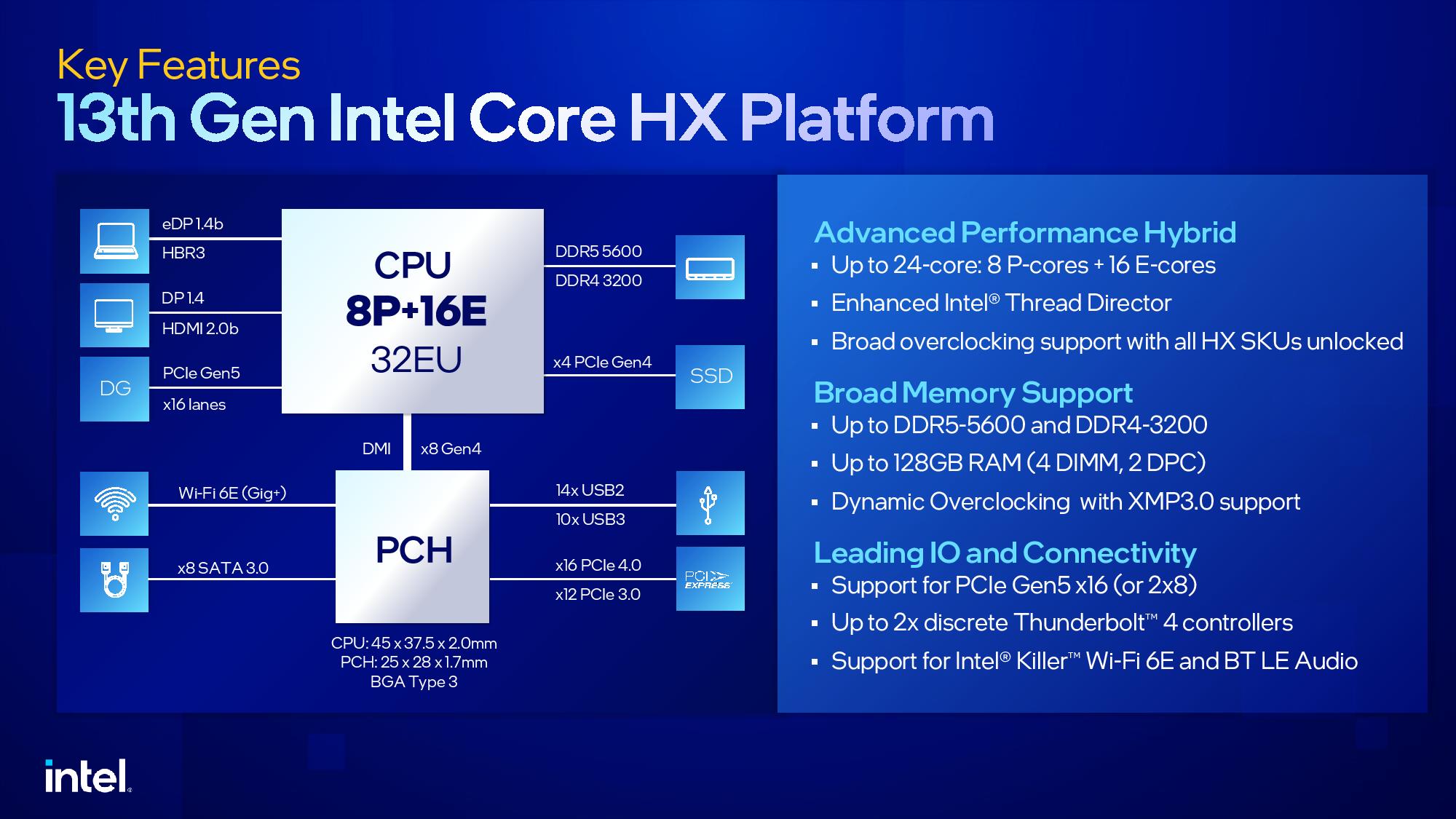
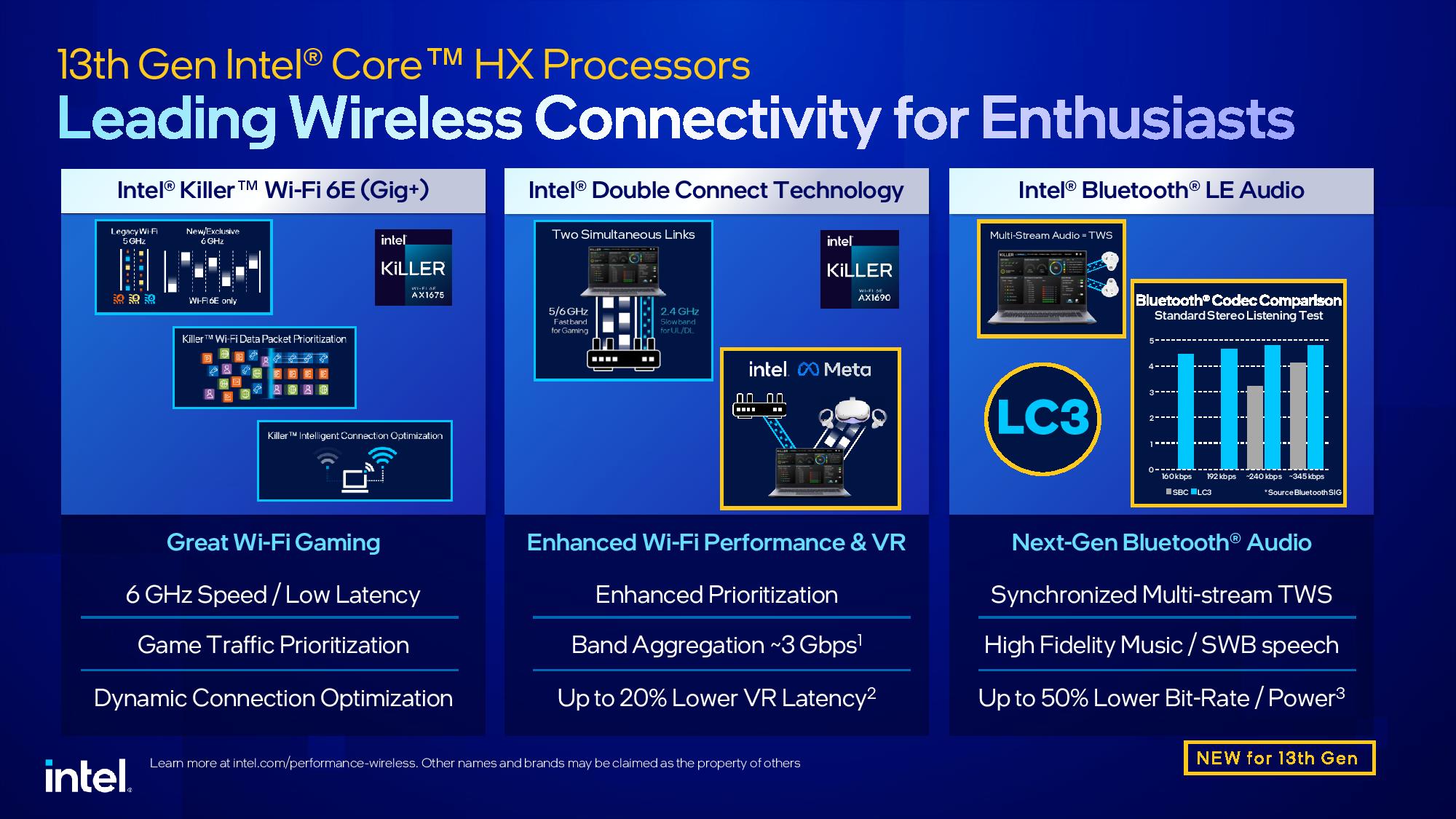
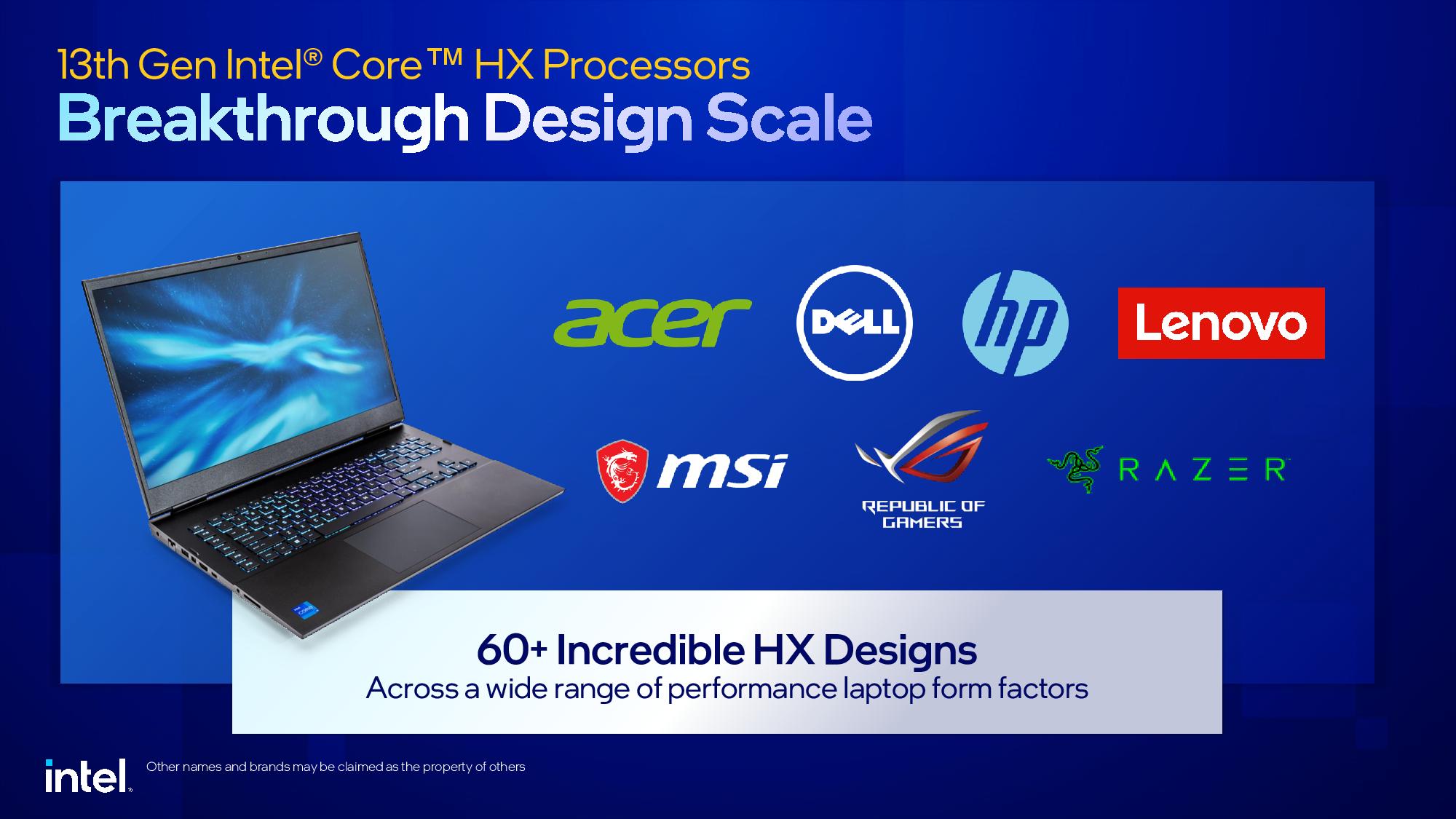
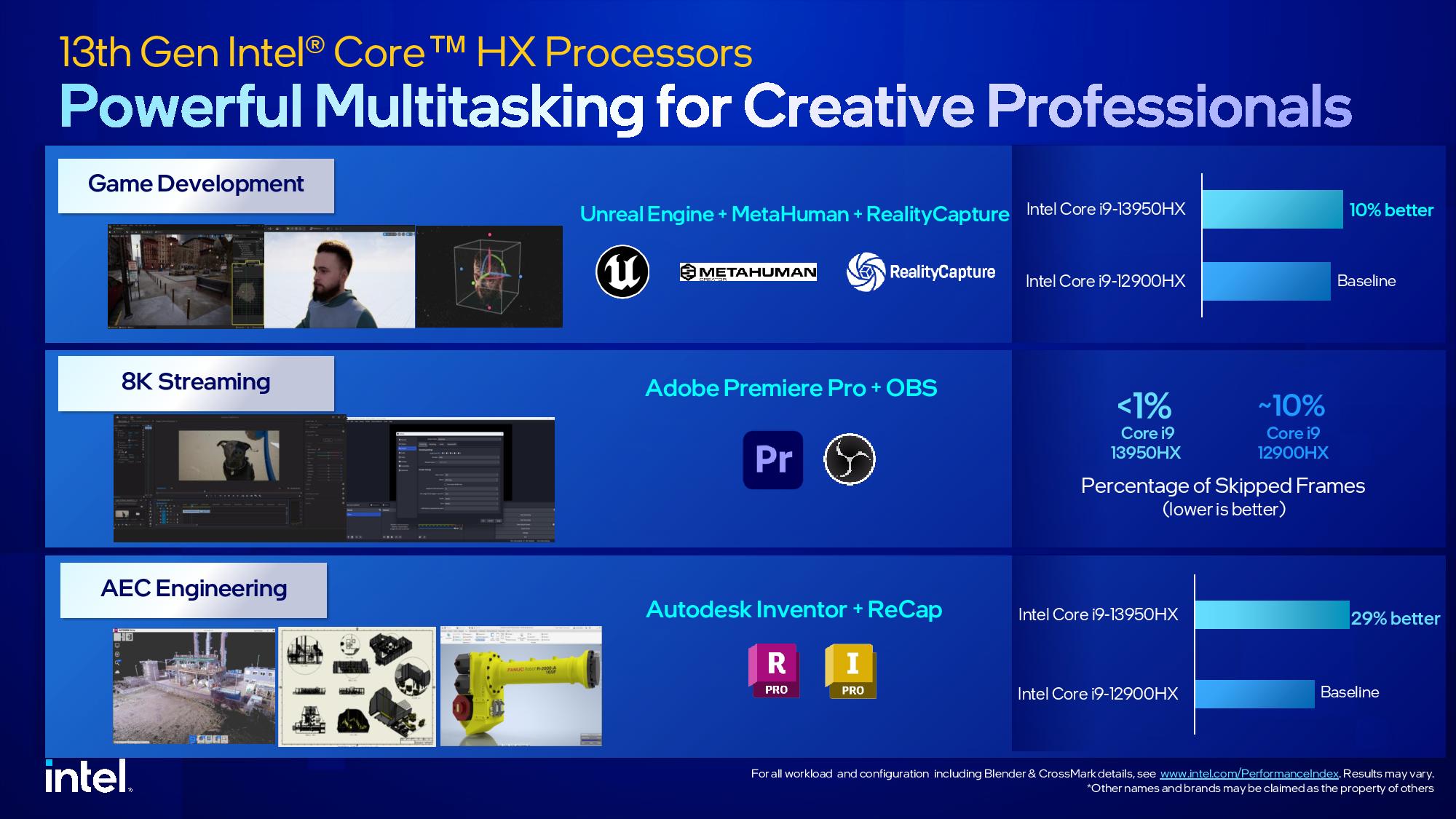
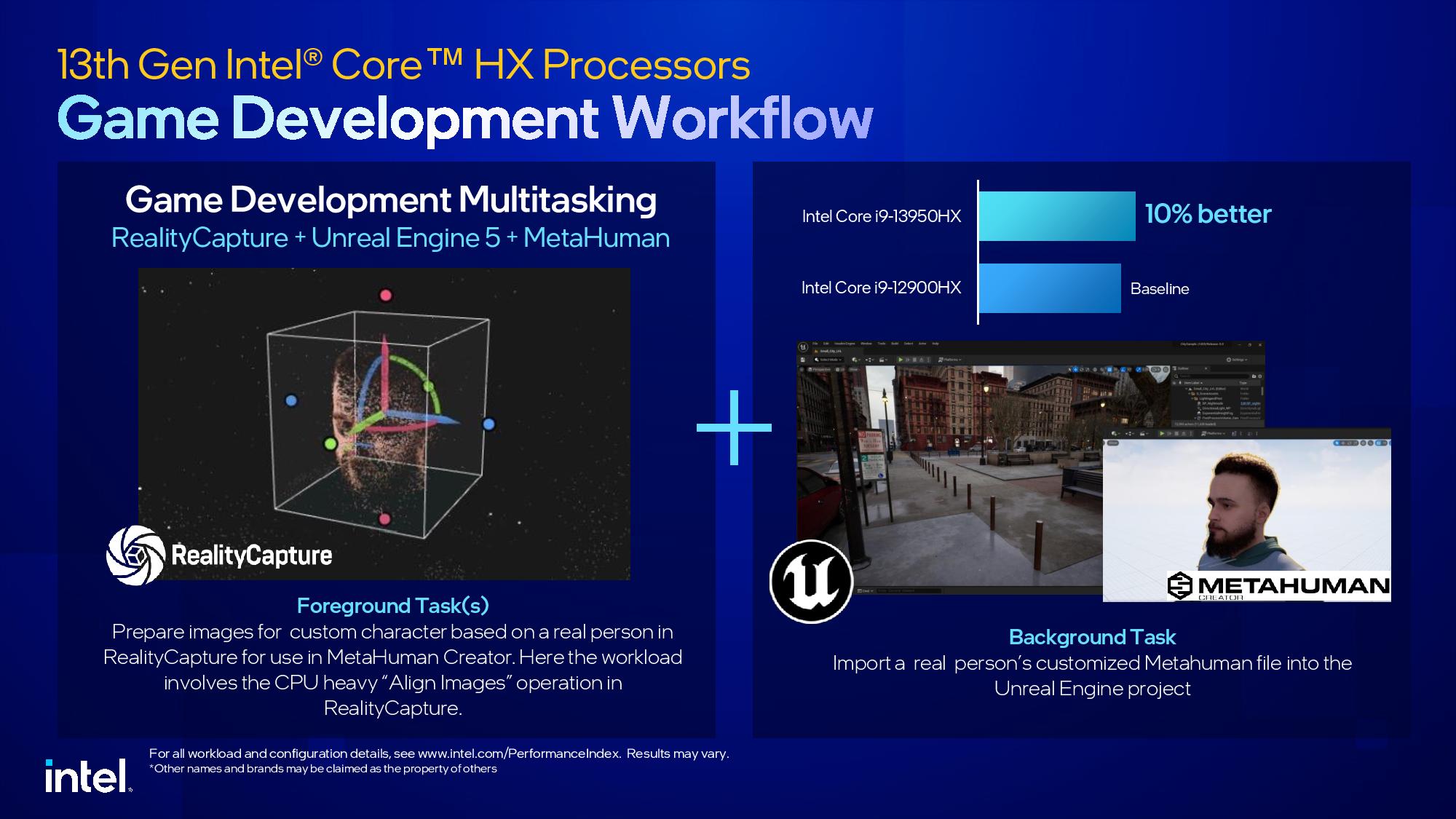
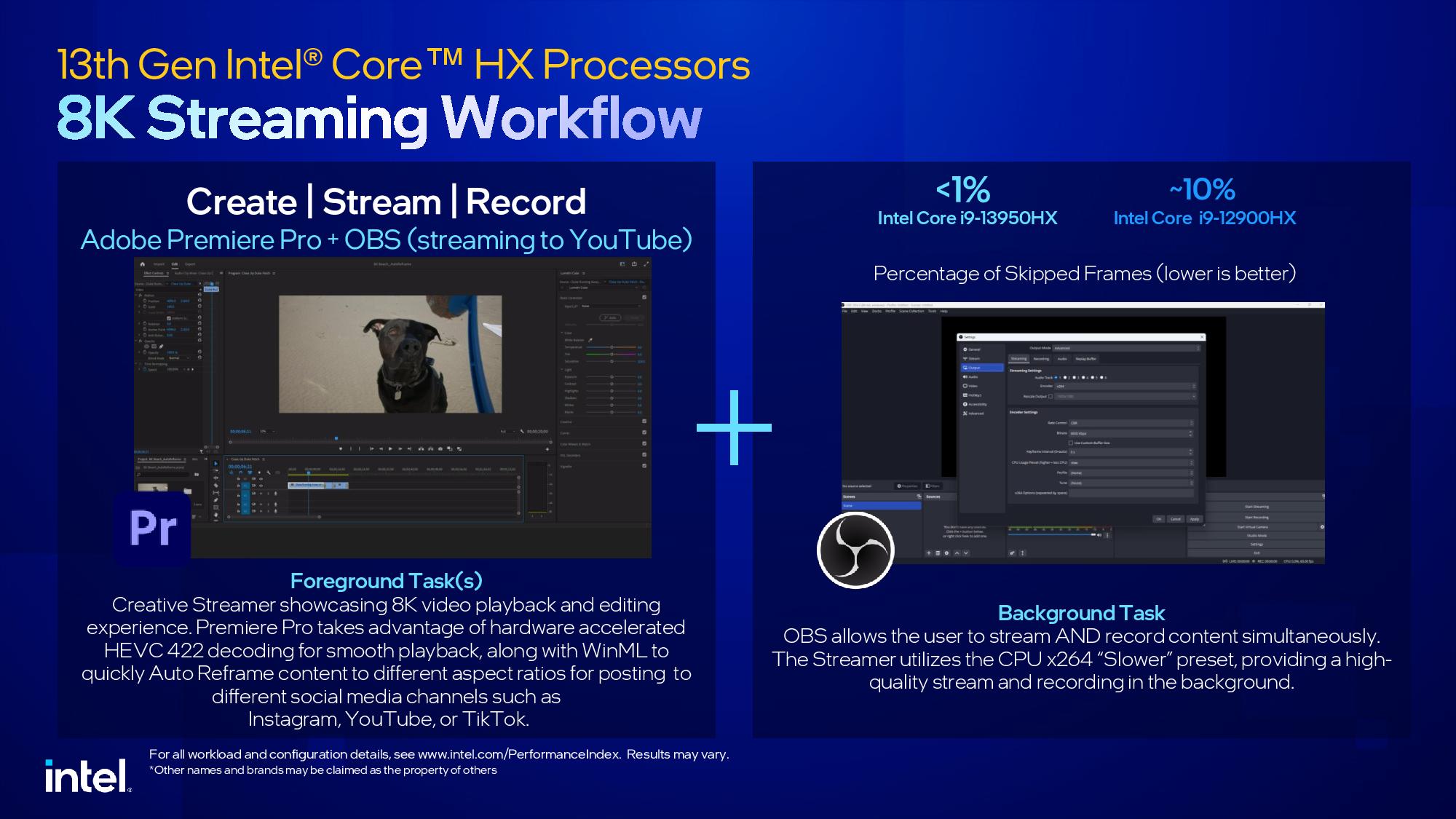
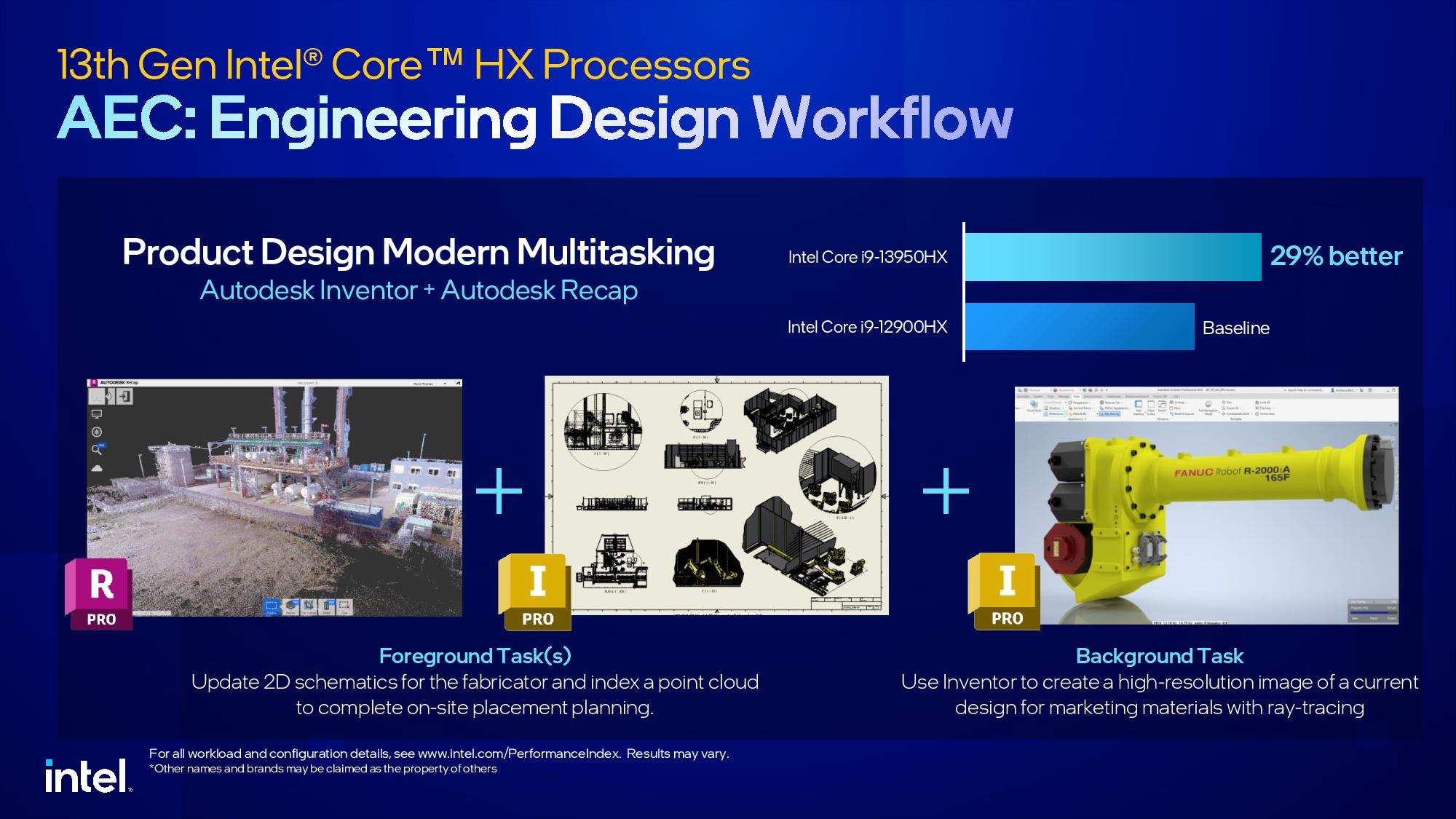
Intel provided some benchmarks, but as with all vendor-provided benchmarks, you should take them with a grain of salt. Intel claims the 13950HX delivers 12% faster gaming performance than the previous-gen 12900HX, but doesn’t list the delta with the Ryzen 9 6900HX that’s included in the chart (that system’s 3080 Ti is running at a lower power setting than the HX-powered systems).
Intel also claims 11% more single-threaded and 49% more multi-threaded performance than the previous-gen12900HK, an odd comparison, in the SPECrate tests. Intel does include the 12900HX, the more logical comparison chip, in the charts but doesn’t list the performance delta relative to its newer HX chips.
Intel also shows impressive gains of 79% and 74% in blender workloads, again using the same odd HK comparison point. That uplift isn’t surprising, given the 13950HX’s eight extra E-Cores.
Intel 13th-Gen HK, H, P and U Series Specifications
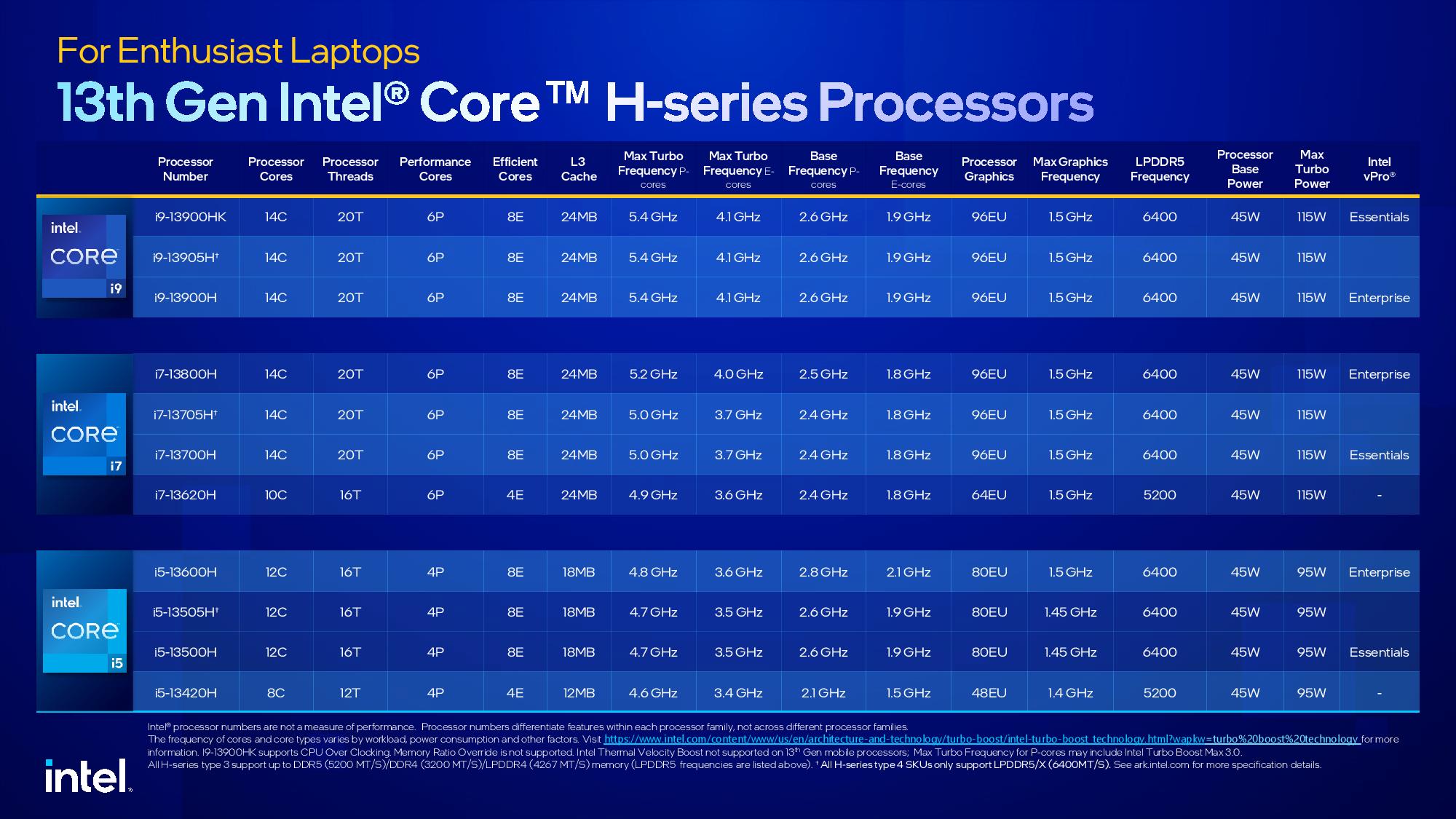
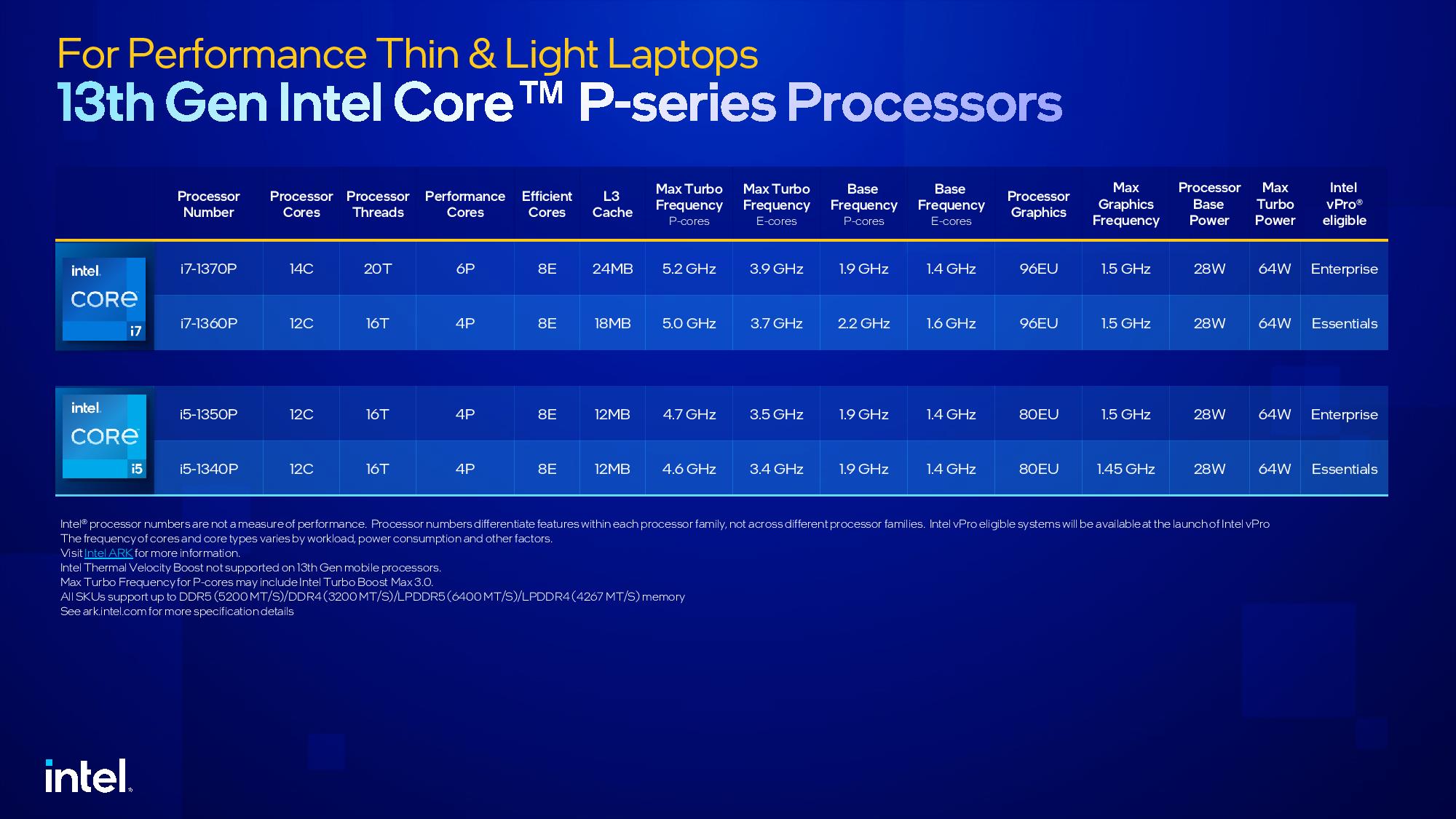
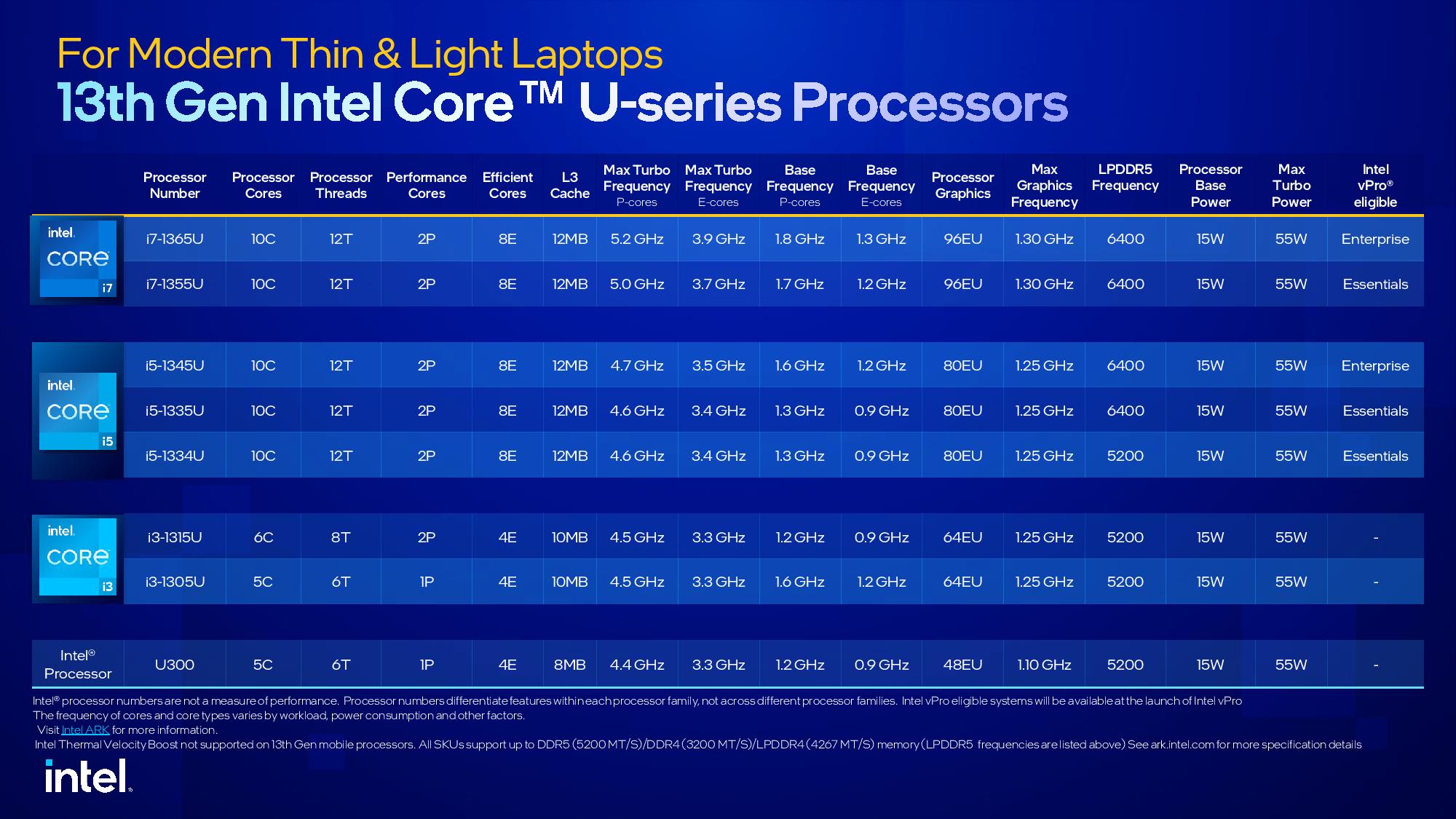
Intel also released what appears to be a broad refresh of its Alder Lake models for the HK, H, P, and U series chips with new Raptor Cove silicon. These families all carry the same core counts and cache allocations as their predecessors, albeit with a few processors getting renamed entirely even though they have the same basic specs. Overall, we see slight clock speed improvements throughout the entire range of these processors but little else to revolutionize the competitive positioning.
There are a few interesting developments, though. First, Intel has added support for the PCIe 5.0 interface, which didn’t make the cut for the 12th-Gen series. Intel is also bringing some models to the market with its Movidius VPU, a discrete AI processor based on Keem Bay, but these are primarily geared for early adopters and software developers because software support is currently very limited. These small modules appear to adhere to the M.2 form factor and plug into the PCIe interface. However, Intel says the modules are integrated at the system level, so it doesn’t appear they will be available separately for purchase.
Intel views the VPU largely as a proving ground and development vehicle for the integrated VPU present in the future Meteor Lake chips, though some of the functionality is available for apps that use the integrated camera (more detail in the slides below).
Intel is also introducing its Endurance Gaming feature for its integrated graphics in all non-HX systems. In effect, this feature can be toggled to lock the frame rate to a fixed value below the maximum speed, thus saving power. Naturally, most users won’t game on the iGPU unless they’re playing e-sports class games, but Intel says this feature can deliver ‘an hour or two’ of additional gaming time when running on battery. This feature is integrated into the Arc control panel for easy toggling. Additionally, the iGPUs also support XeSS Super Sampling to deliver increased performance.
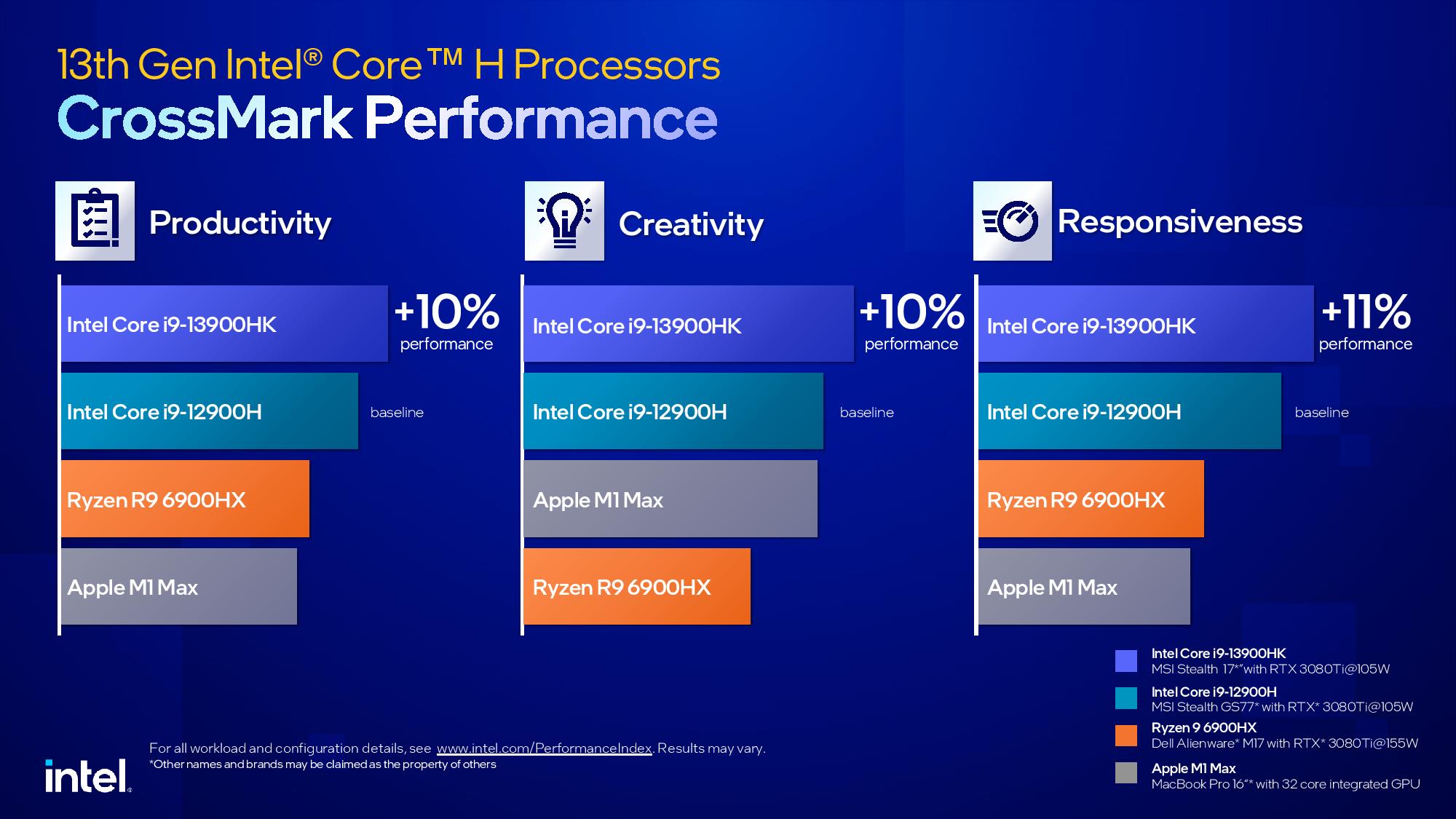
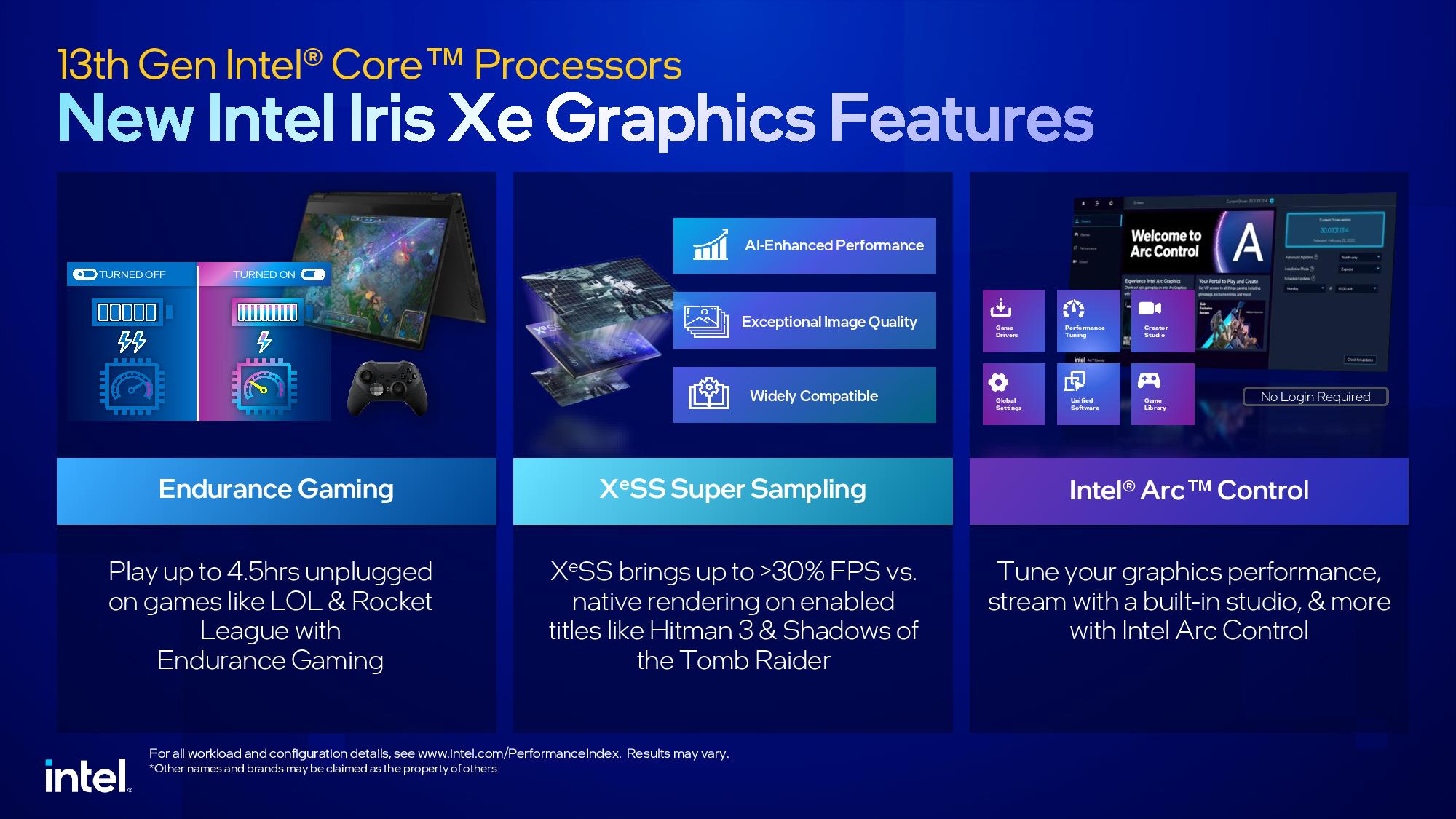
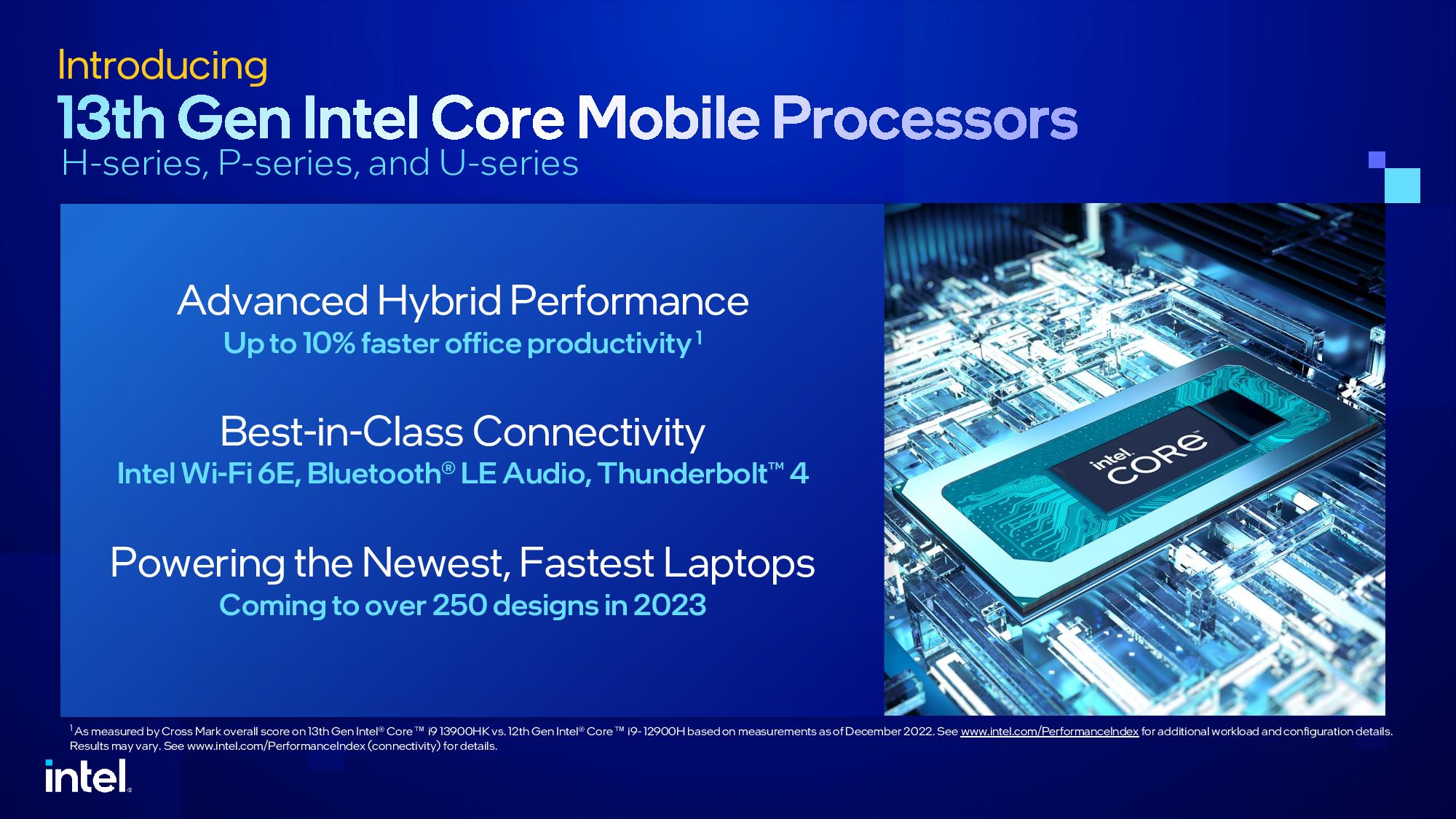
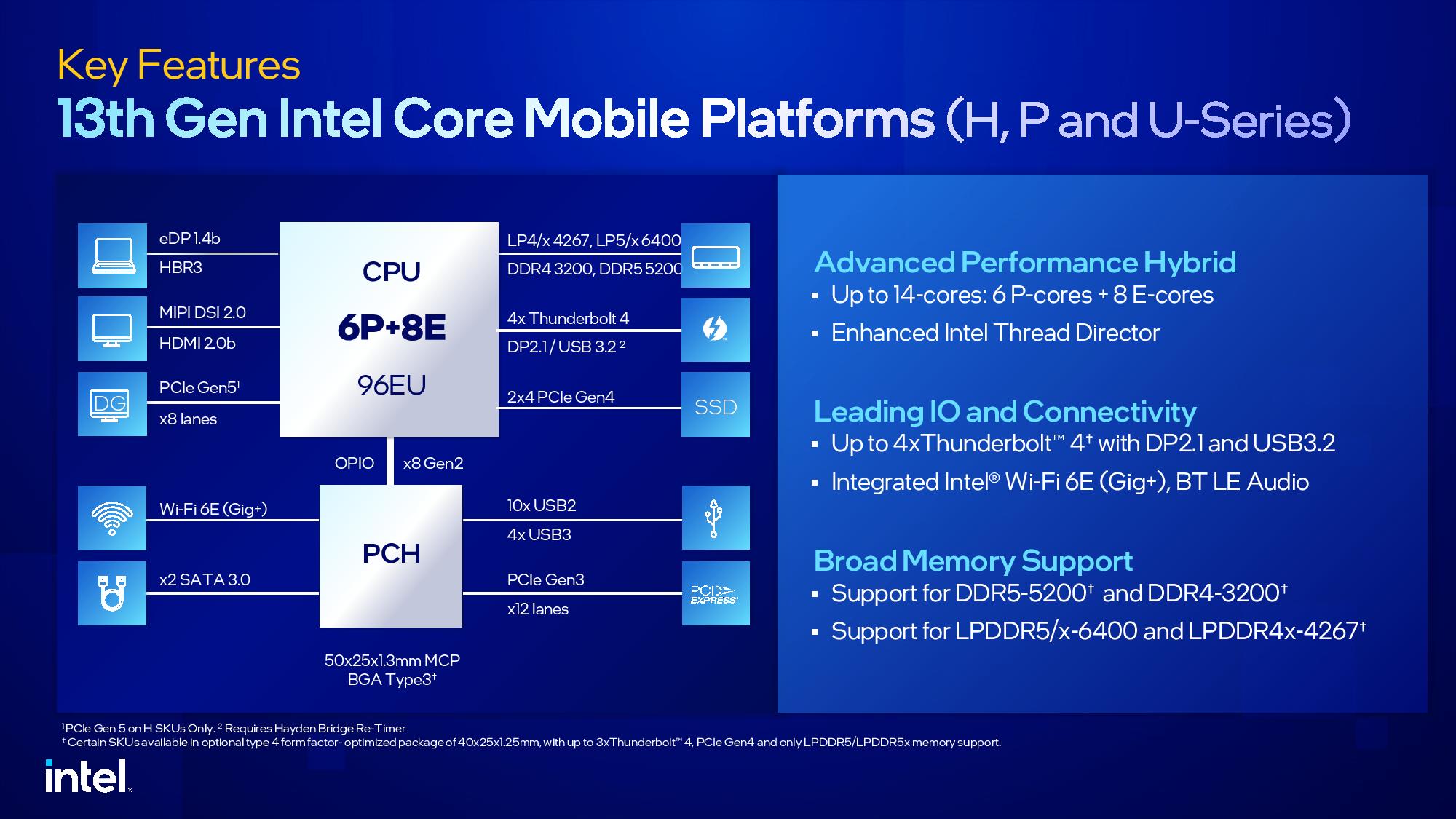
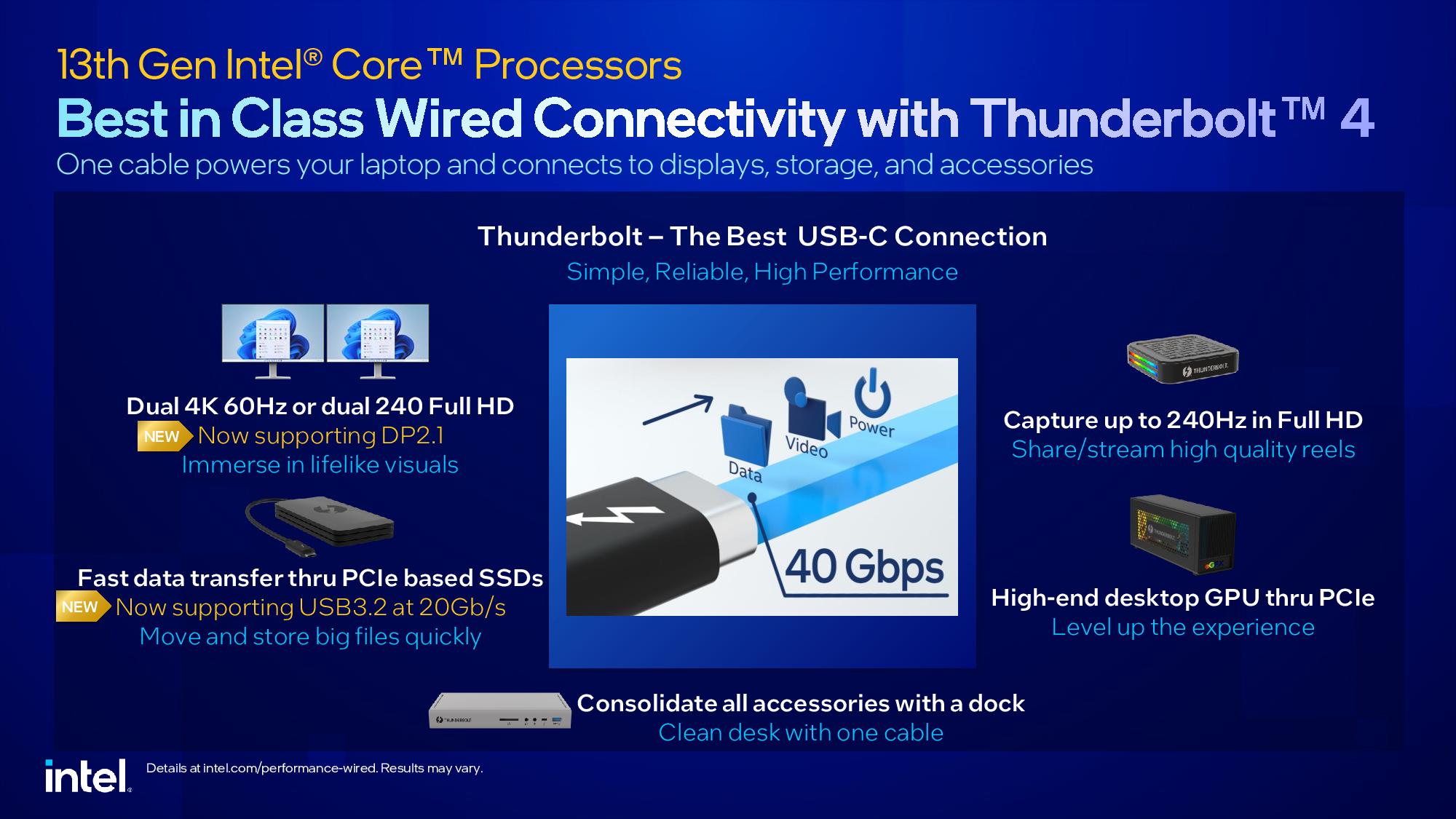
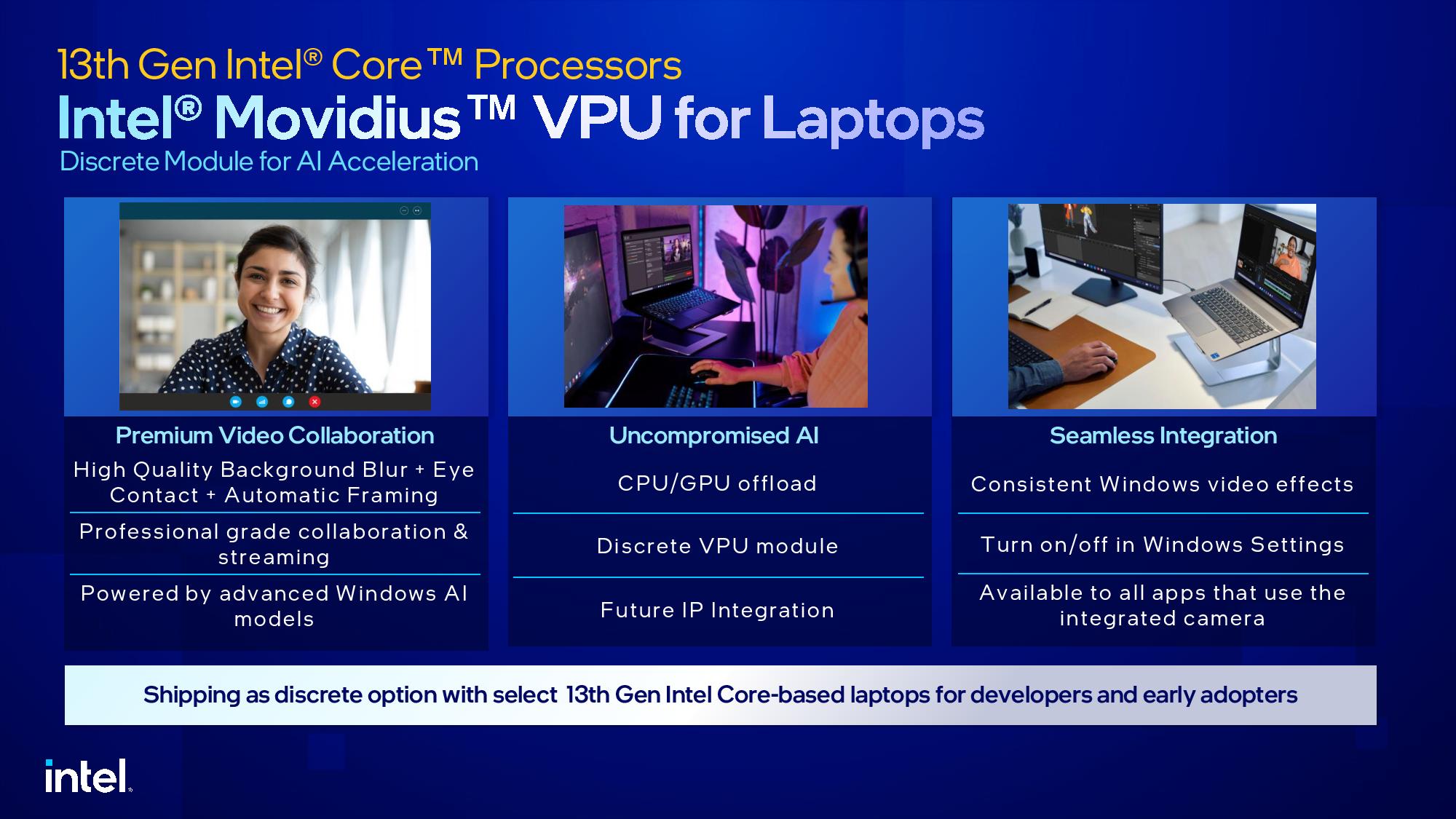
Intel didn’t focus much on the H, P and U series in its briefings, and we see the same lack of attention in the benchmark comparisons. Intel did show a few benchmark comparisons from the CrossMark benchmark, but the Productivity, Creativity, and Responsiveness categories for this benchmark measure performance in multiple applications yet only provide one score. That makes trying to glean any meaningful performance comparisons from this benchmark a fruitless endeavor.
It is noteworthy that, again, Intel shows a current-gen flagship model, the HK in this case, against a lesser previous-gen model, the 12900H. That doesn’t bode well for actual gen-on-gen performance improvements.
Intel N-Series Processors
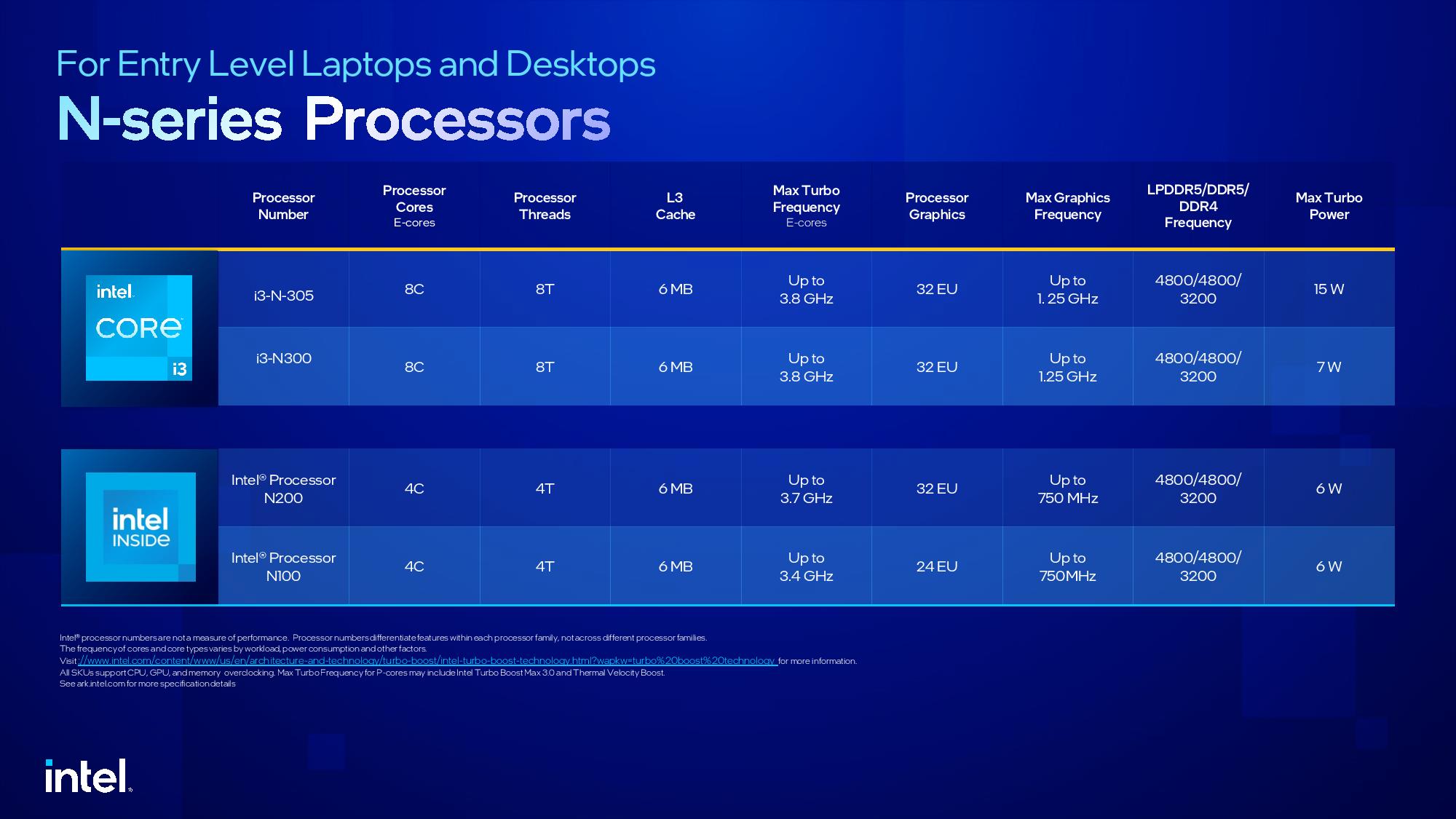
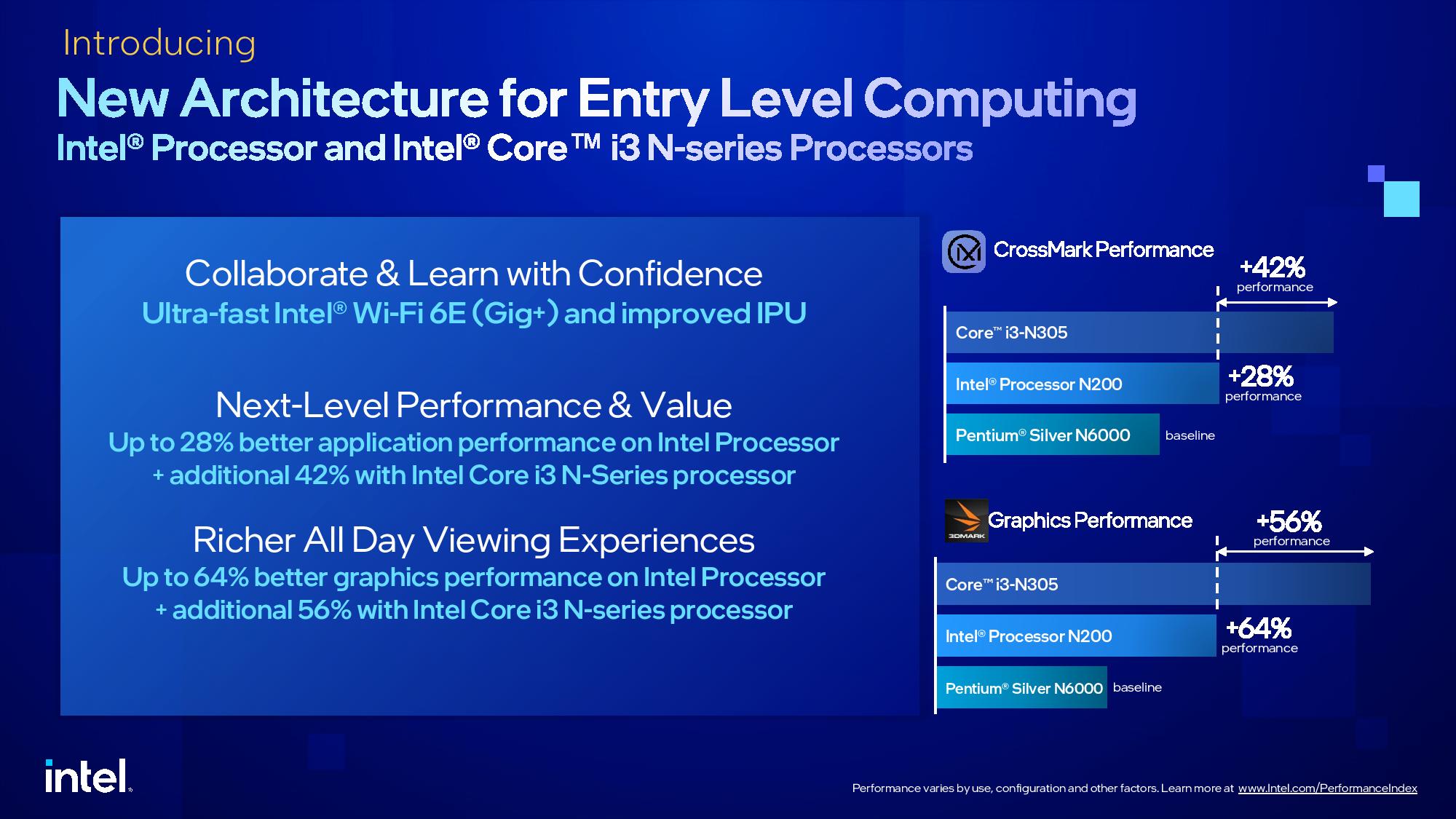

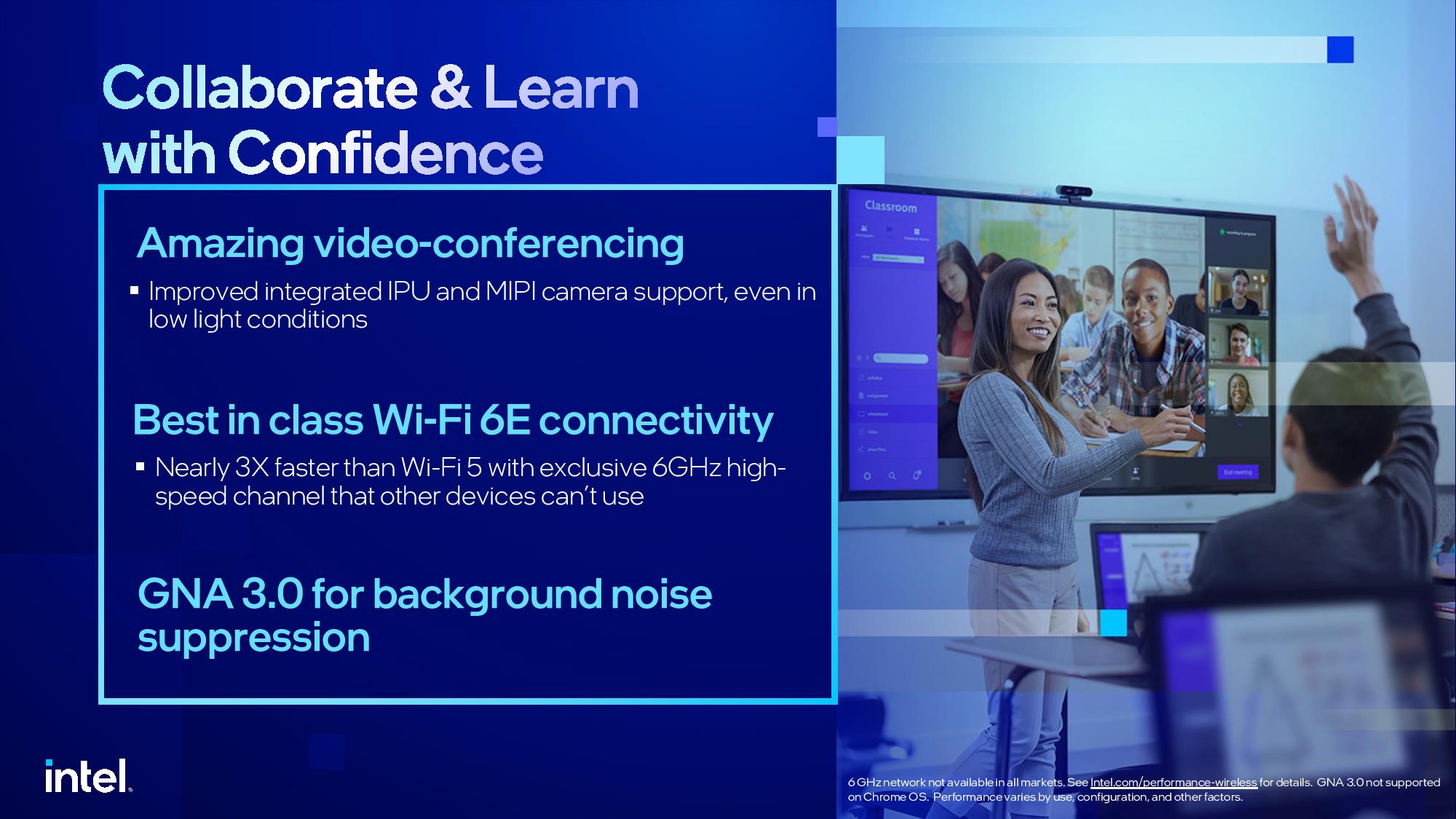
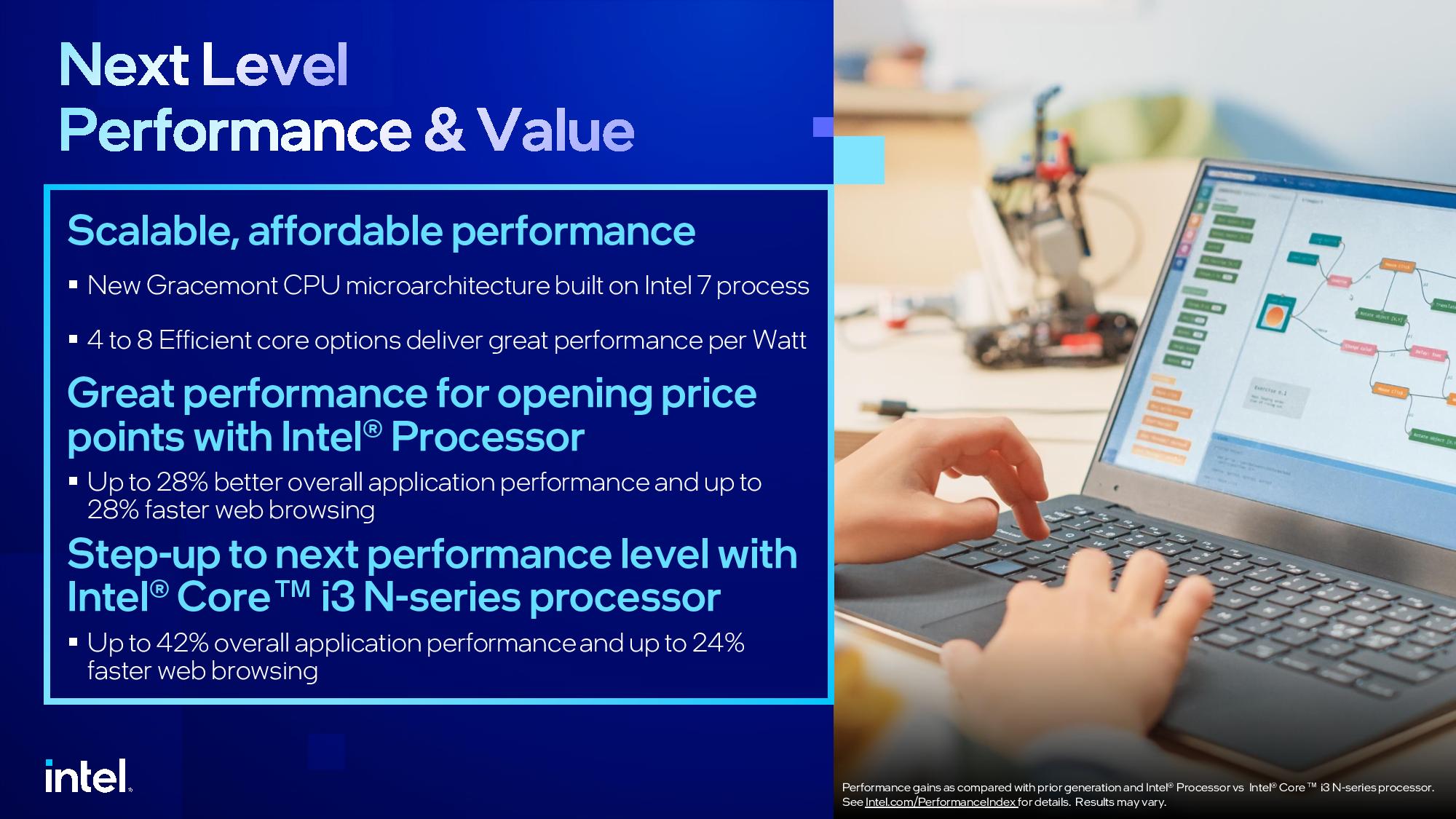
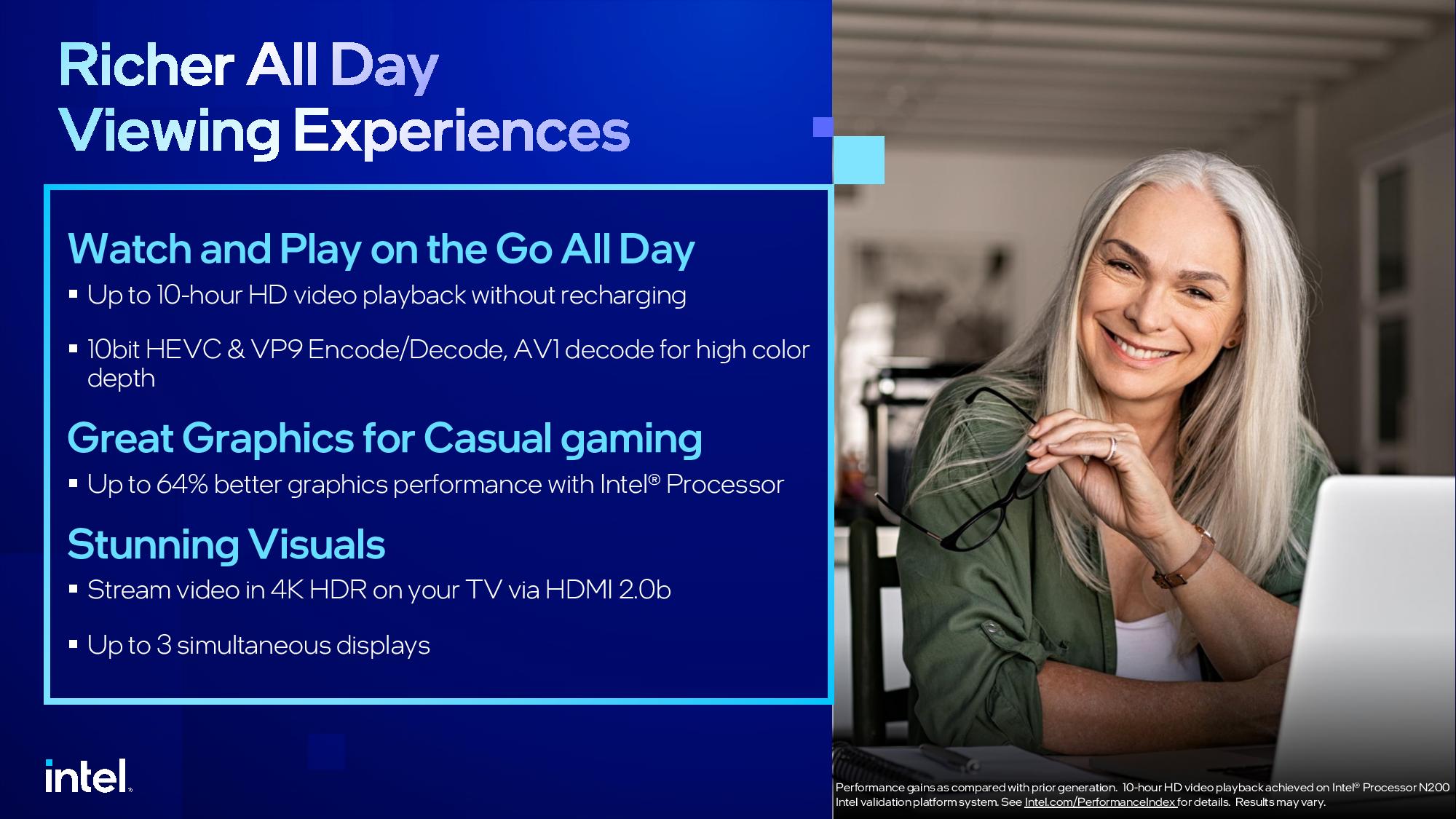
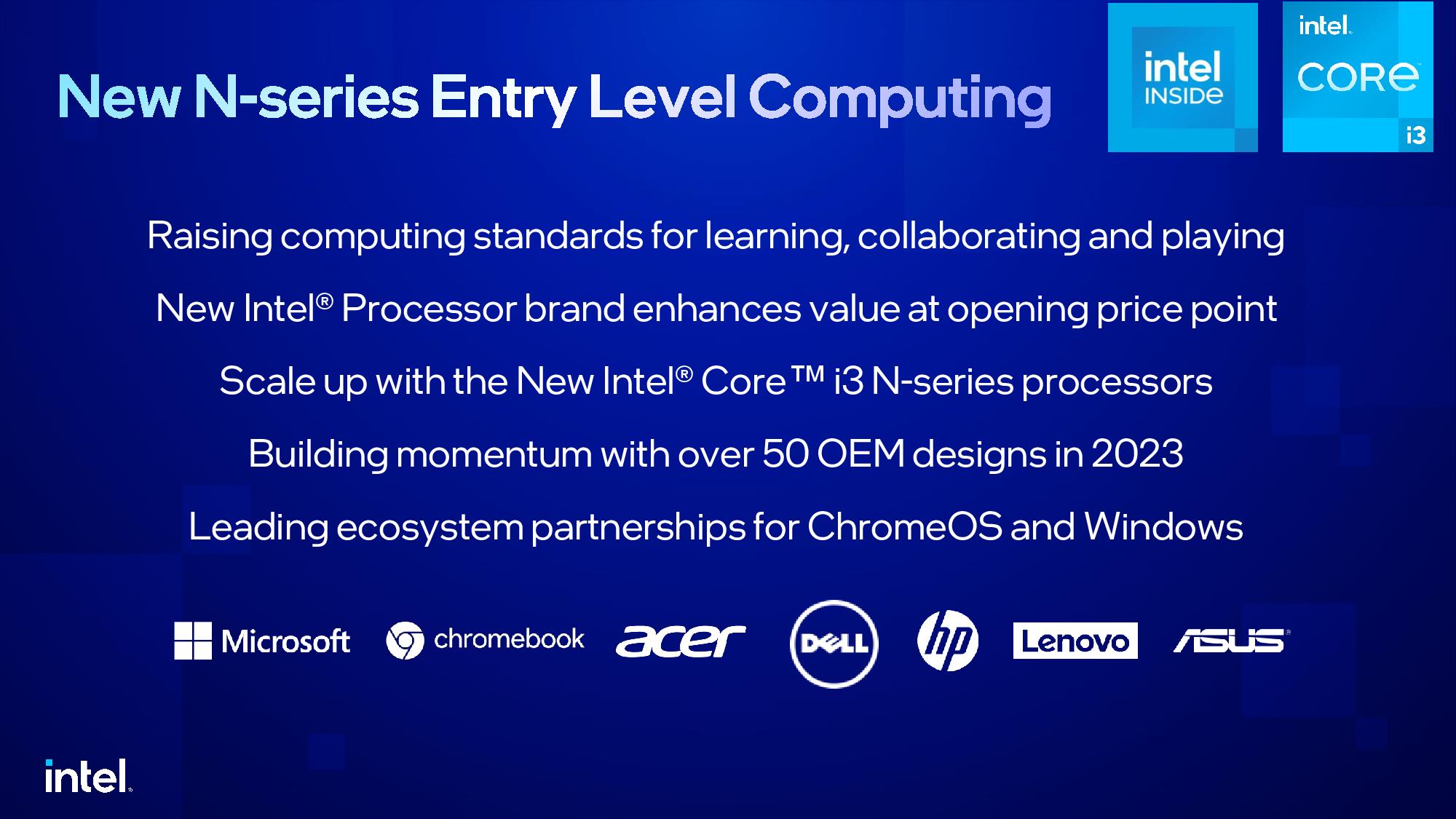
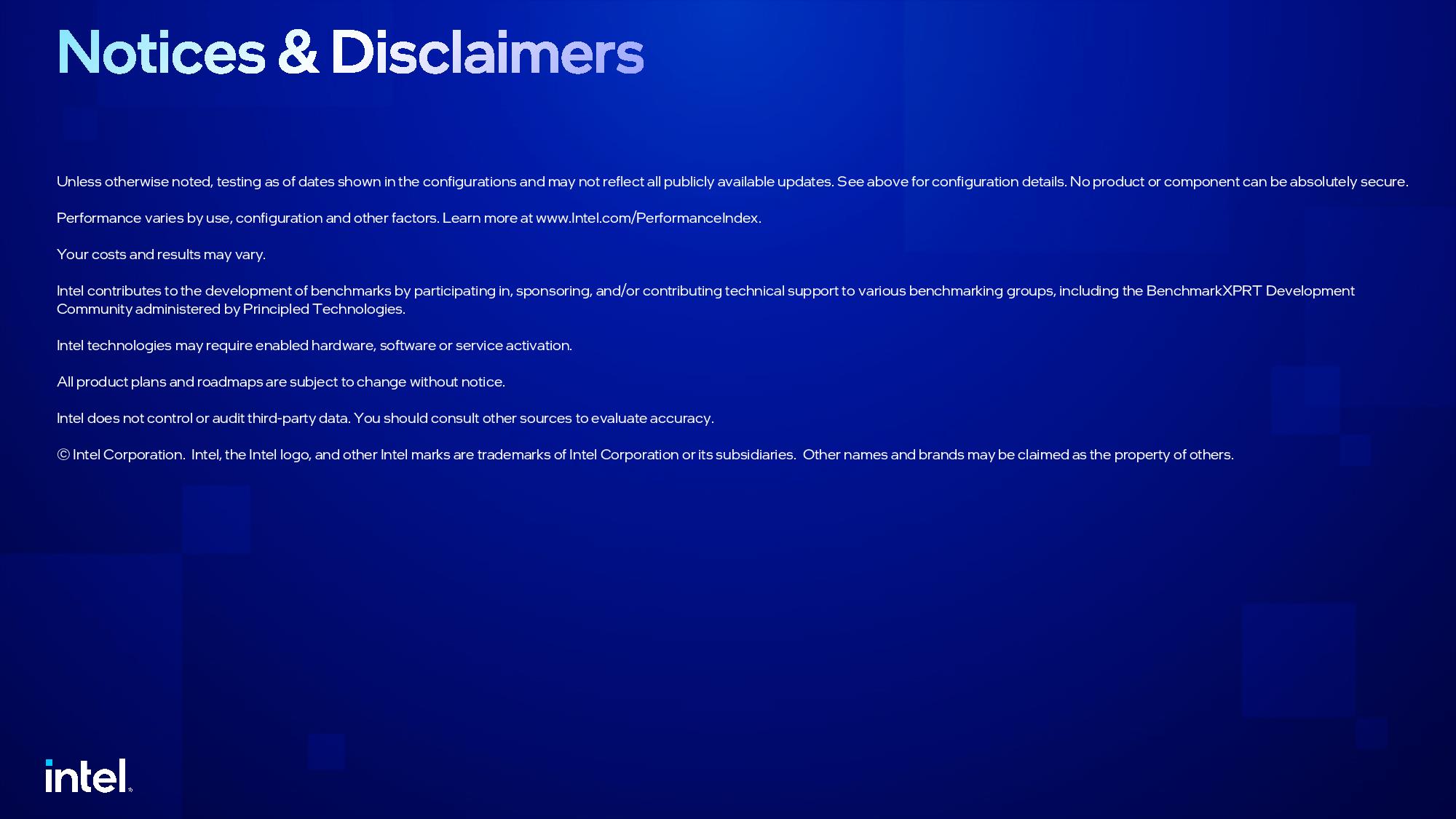
Intel also introduced its N-series processors, which are based on its Alder Lake-N architecture in 6W, 7W and 15W flavors. This design consists of only the Gracemont-powered E-Cores for computation – these chips don’t have P-Cores - but support all of the other connectivity options you can find in the standard Alder Lake chips.
These processors are designed for the lowest-end notebooks in the $250 to $400 price range and encompass both Windows and Chrome-powered devices. The higher-end 8-core, 8-thread models are branded as the Core i3-N-305 and i3-N300, so Intel has surprisingly chosen to bring these in as lower-end Core i3 models. These models have a 32 EU iGPU, but Intel hasn't disclosed which revision.
The two lower-end four-core four-thread models are branded simply as “Intel Processor N200” and “Intel Processor N100.” These models come with either a 24 or 32EU iGPU.
As Intel previously announced, it will now use the ‘Intel Processor’ branding after it retired the iconic Pentium and Celeron branding it previously employed for this class of device. Intel says this move is to simplify branding on the low end, but it hasn't been a popular decision.
Intel was largely silent about its discrete Arc GPUs during the briefings and in its disclosures, which isn’t surprising given the recent shakeup. We don’t expect to see much penetration with Arc GPUs with systems vendors this generation.
Overall, Intel says that its partners will release 200+ systems built on its H, P, and U series designs in a multitude of form factors. Additionally, 60 systems based on the HX processors will come to market. All of the 13th-Gen systems will begin to arrive on shelves in the first quarter of 2023.

Paul Alcorn is the Editor-in-Chief for Tom's Hardware US. He also writes news and reviews on CPUs, storage, and enterprise hardware.
-
-Fran- Those "mobile" H SKUs will use more power than the 5800X3D in a desktop machine; holy hell xDReply
This makes me believe AMD just needs to slap some VCache onto Dragon Range and have a field trip in mobile. Let Intel claim the "threaded" crown with the Cinebench Accelerators (I read this nickname for the E-cores elsewhere and made me laugh xD) and destroy them on gaming performance and power.
Interesting times ahead for mobile! I'll be really interested in seeing how the i5's on mobile perform compared to whatever AMD will put out, as that is the price range most people would be in the market for: $800-$1500K. Or so I believe?
Regards. -
salgado18 Reply
Yes, except AMD is not held back by technology, but by business. Zen 2 was already more power efficient than Raptor Lake, but vendors keep using mostly Intel for some reason. I think the details would be hard to find for us on the outside, but to see so many thin-and-light laptops and convertibles using power-hungry Intels is surely sad. (The Asus Zenbook S with an i7 switches all work to E-cores after a long use, I bet a Ryzen 5000 would perform a lot better: https://www.tomshardware.com/reviews/asus-zenbook-s13-flip-oled)-Fran- said:Those "mobile" H SKUs will use more power than the 5800X3D in a desktop machine; holy hell xD
This makes me believe AMD just needs to slap some VCache onto Dragon Range and have a field trip in mobile. Let Intel claim the "threaded" crown with the Cinebench Accelerators (I read this nickname for the E-cores elsewhere and made me laugh xD) and destroy them on gaming performance and power.
Interesting times ahead for mobile! I'll be really interested in seeing how the i5's on mobile perform compared to whatever AMD will put out, as that is the price range most people would be in the market for: $800-$1500K. Or so I believe?
Regards. -
Elusive Ruse Reply
I think I heard Buildzoid say sth along those lines.-Fran- said:Those "mobile" H SKUs will use more power than the 5800X3D in a desktop machine; holy hell xD
This makes me believe AMD just needs to slap some VCache onto Dragon Range and have a field trip in mobile. Let Intel claim the "threaded" crown with the Cinebench Accelerators (I read this nickname for the E-cores elsewhere and made me laugh xD) and destroy them on gaming performance and power.
Regards. -
Exploding PSU I've been waiting for Intel to launch their 13th gen mobile CPUs. Hopefully the launch would make previous gen products cheaper. Preferably 8th gen ones.Reply
